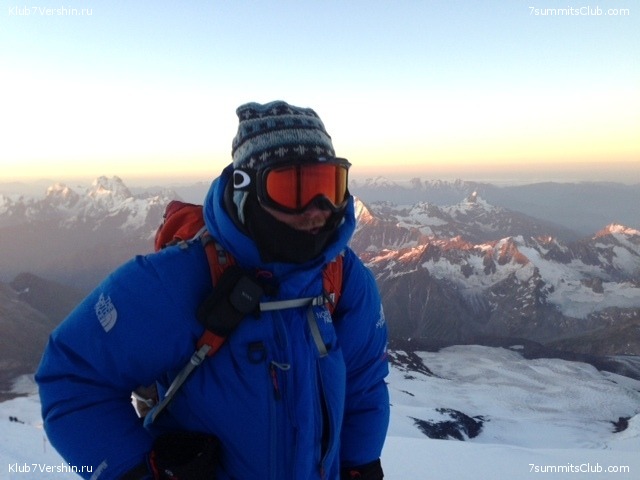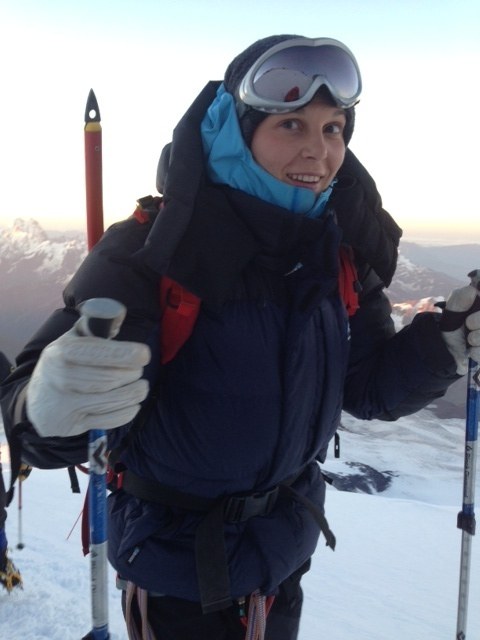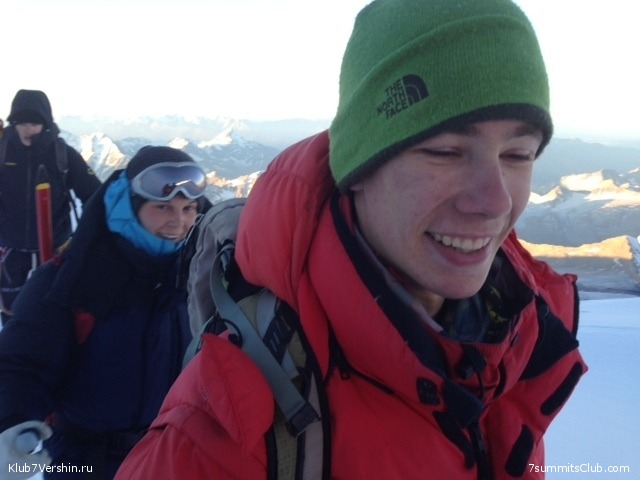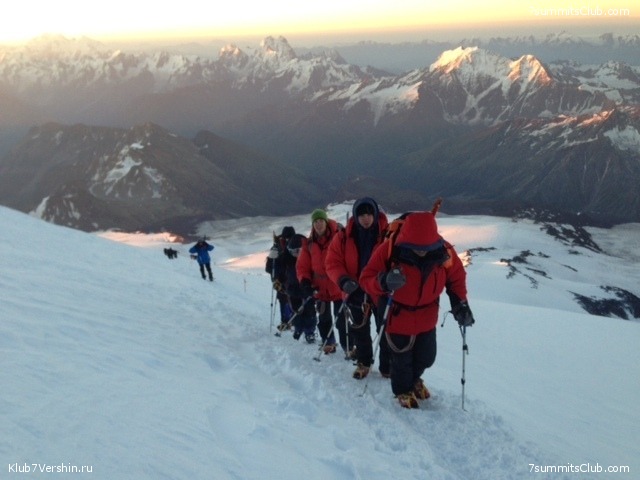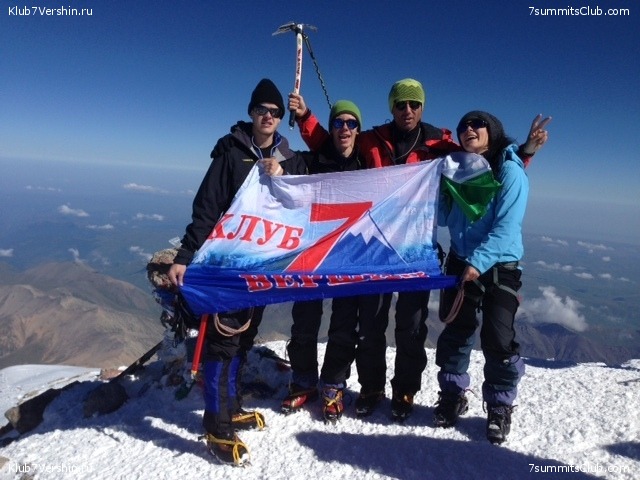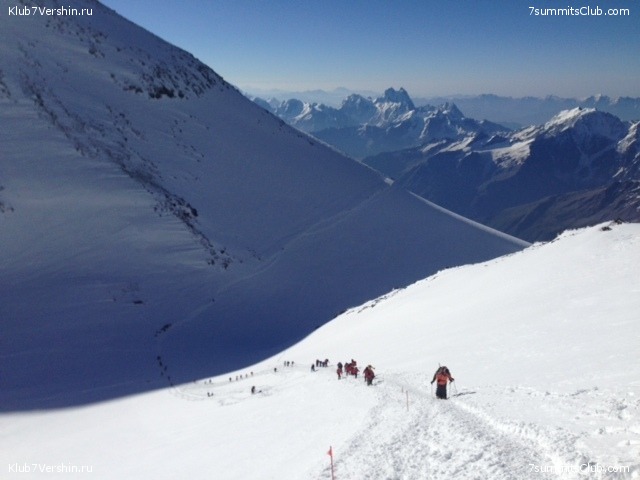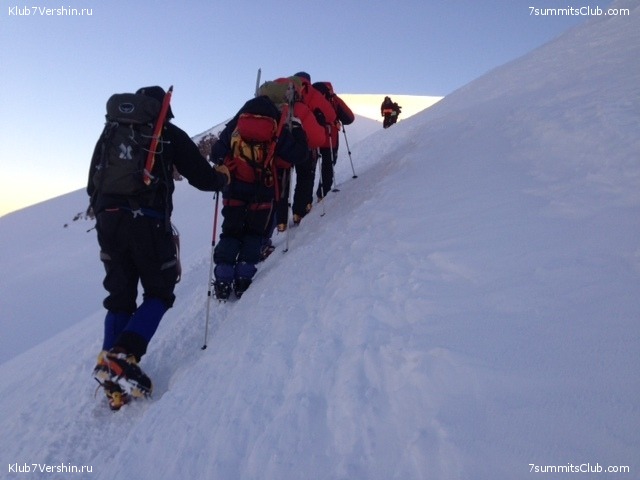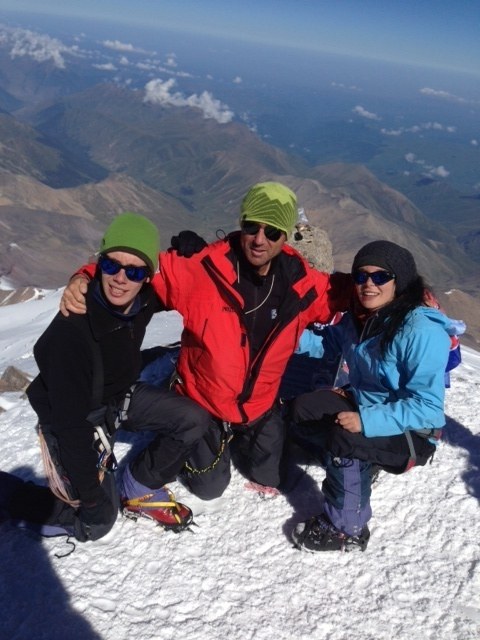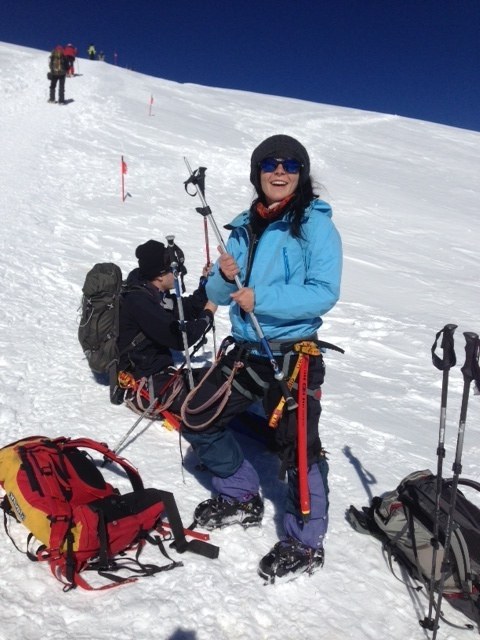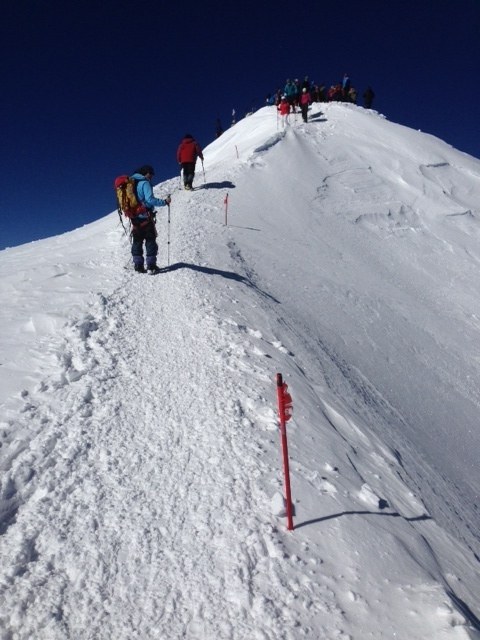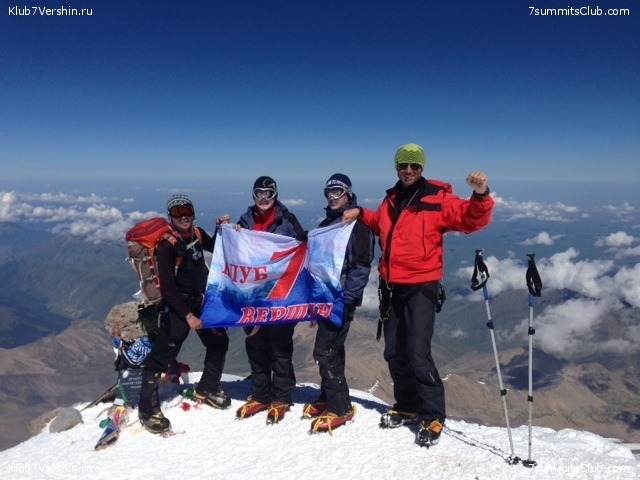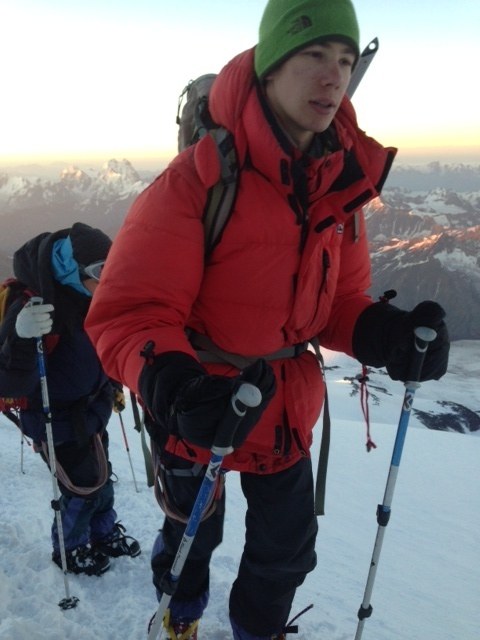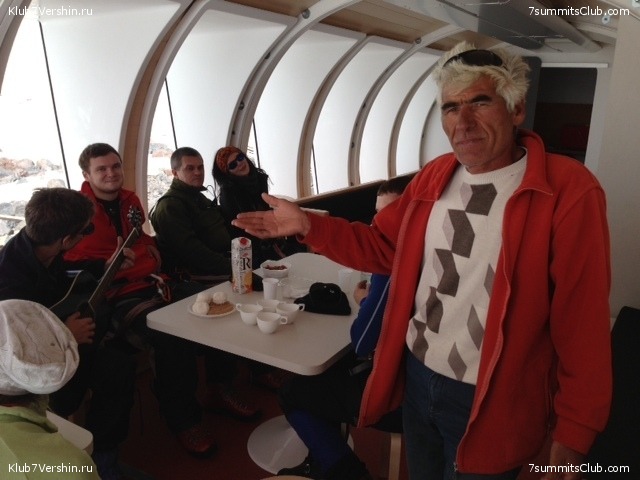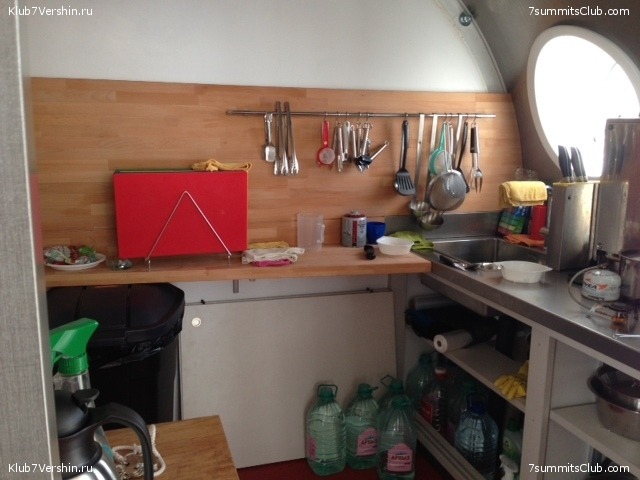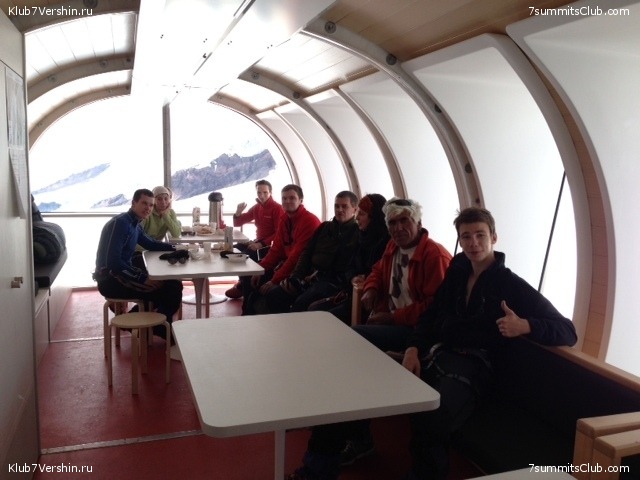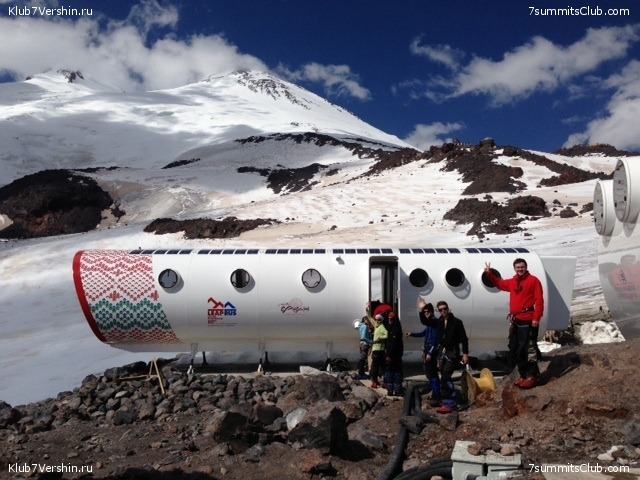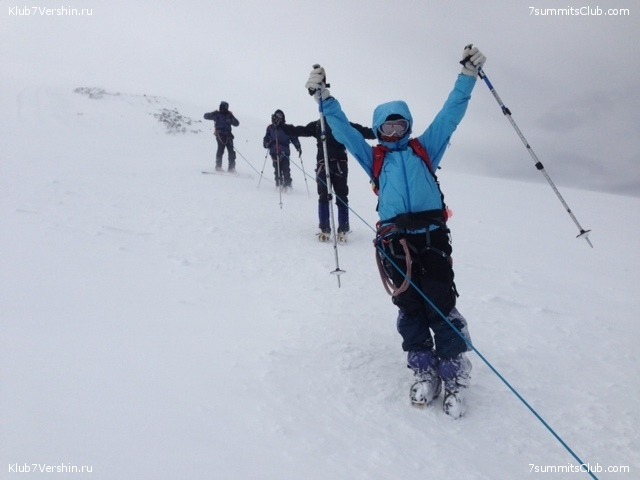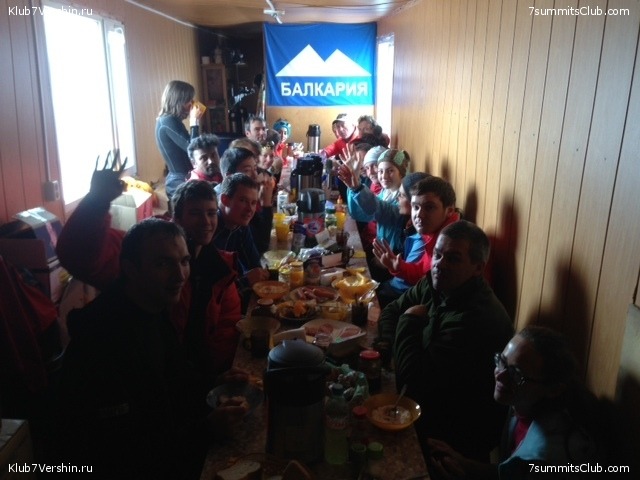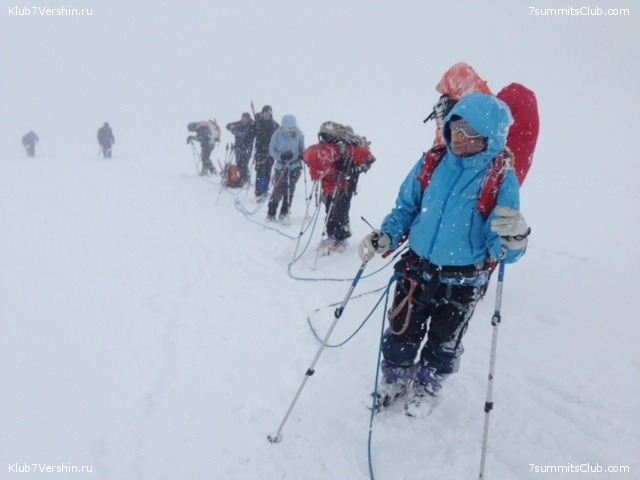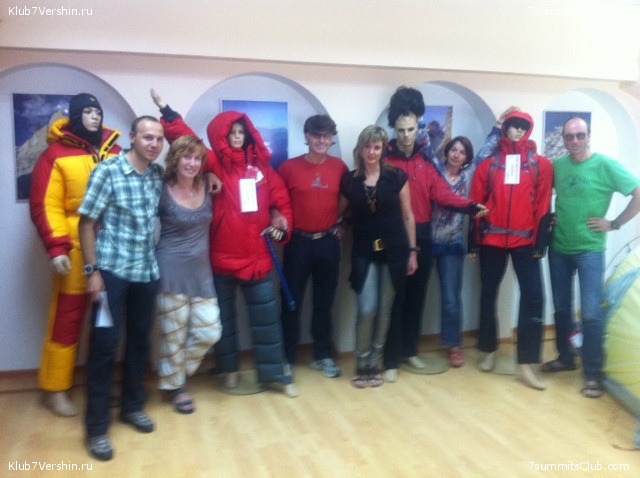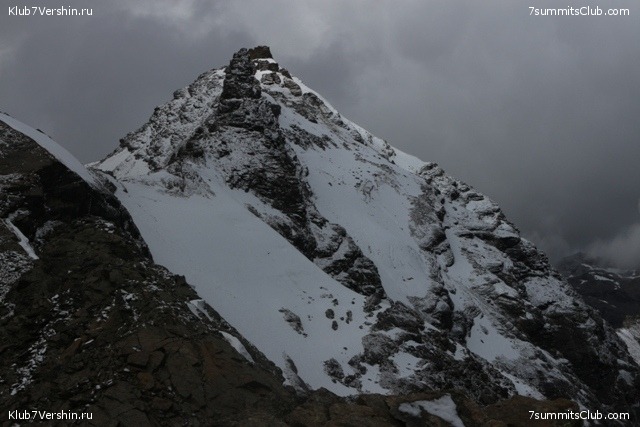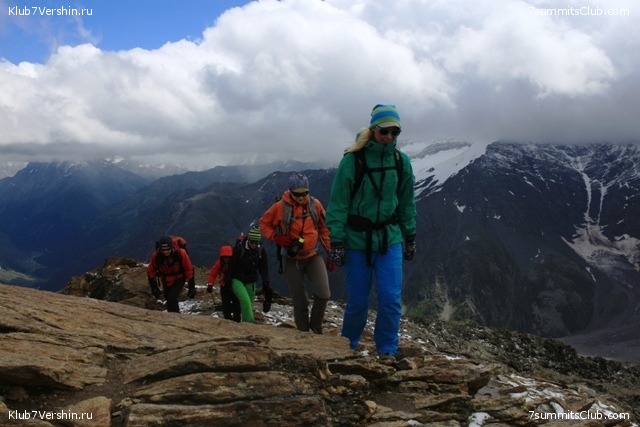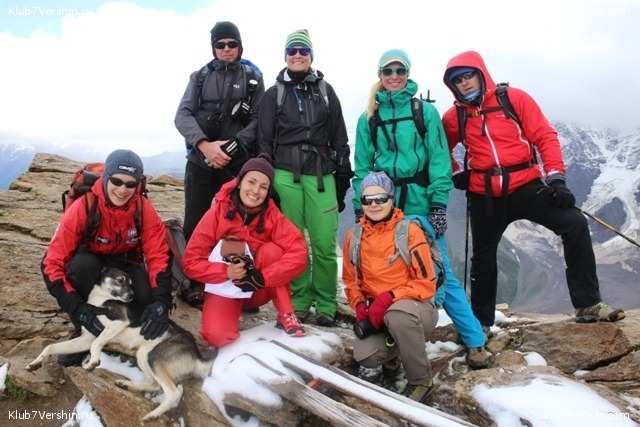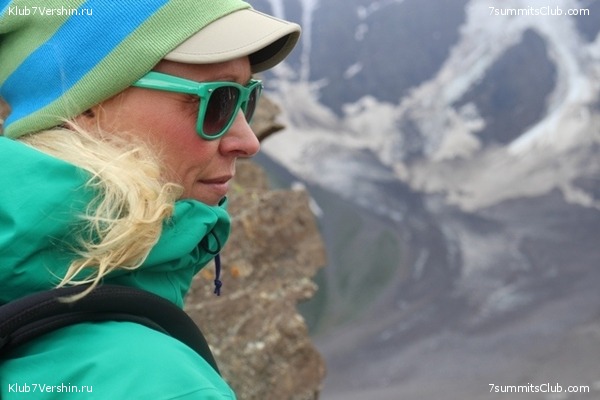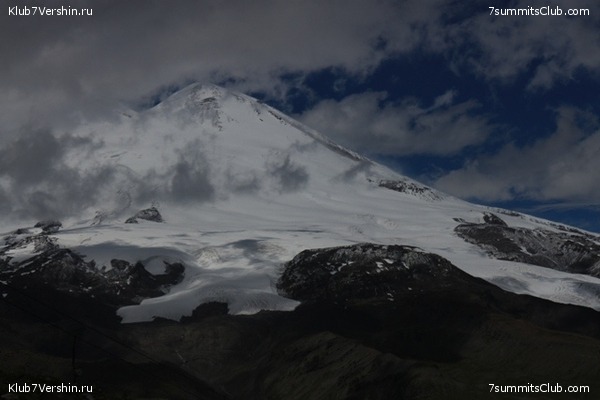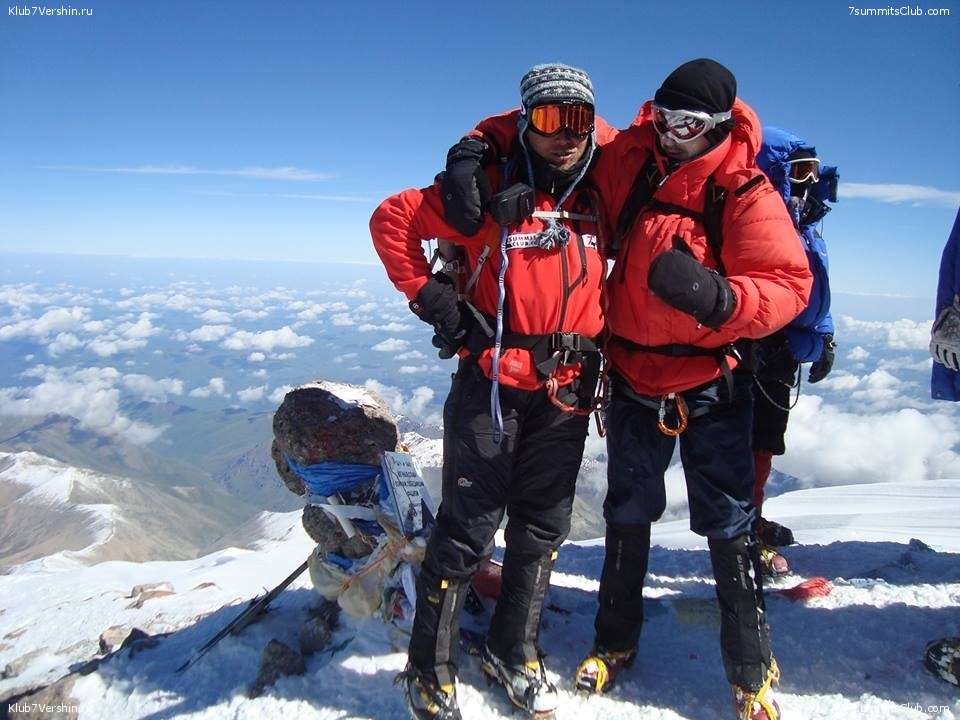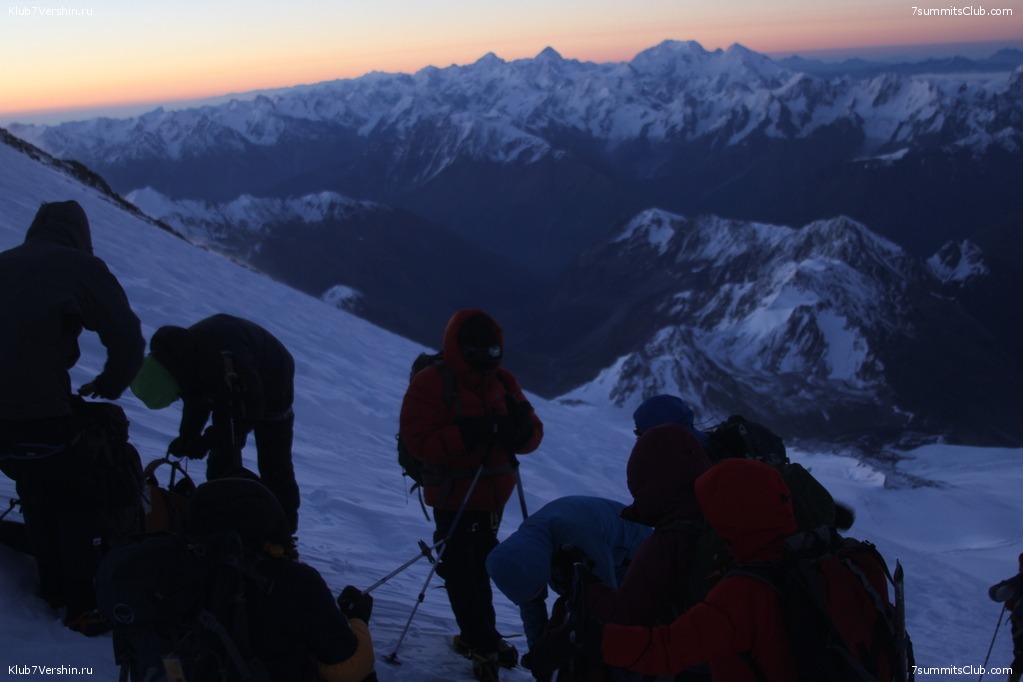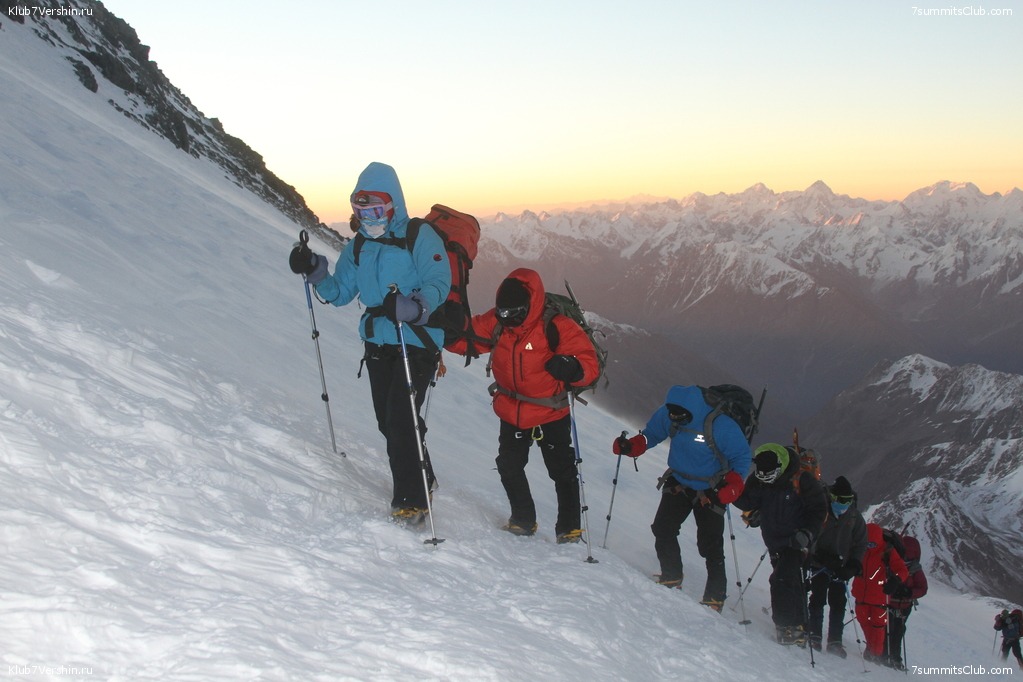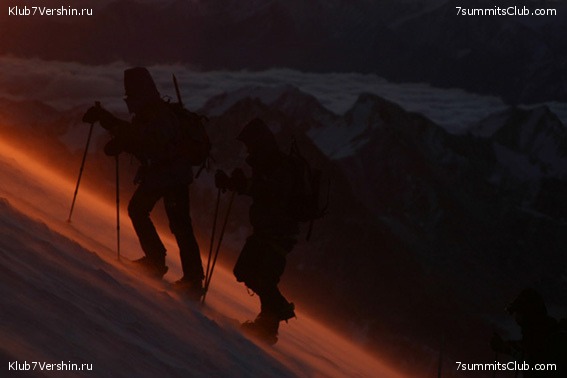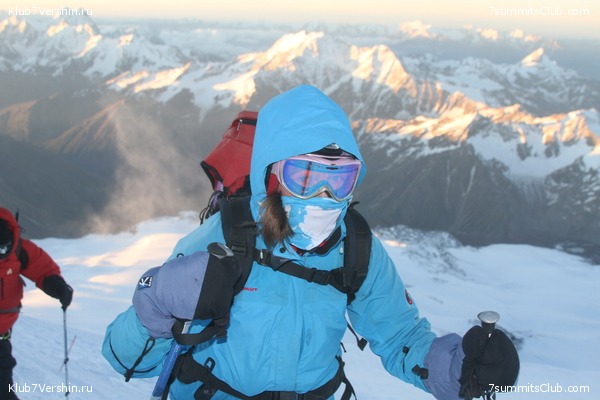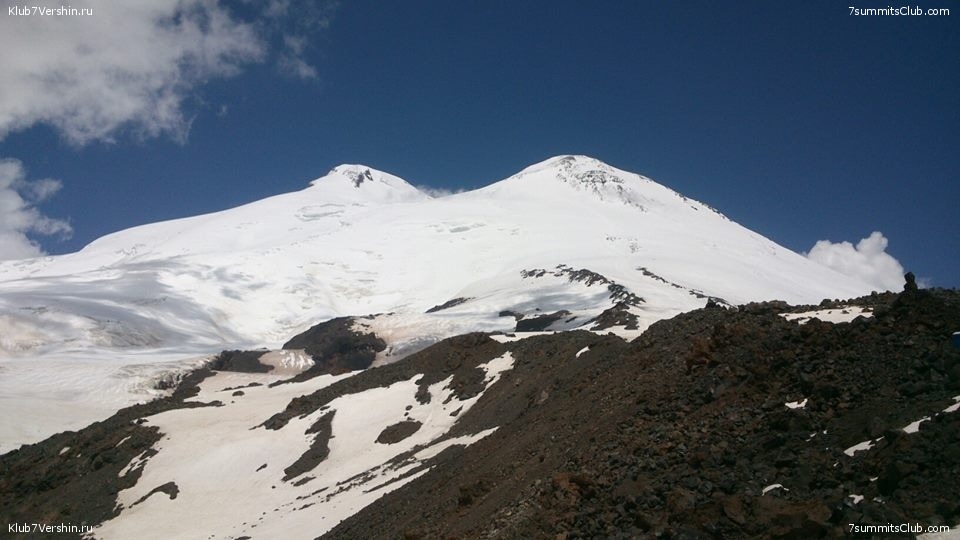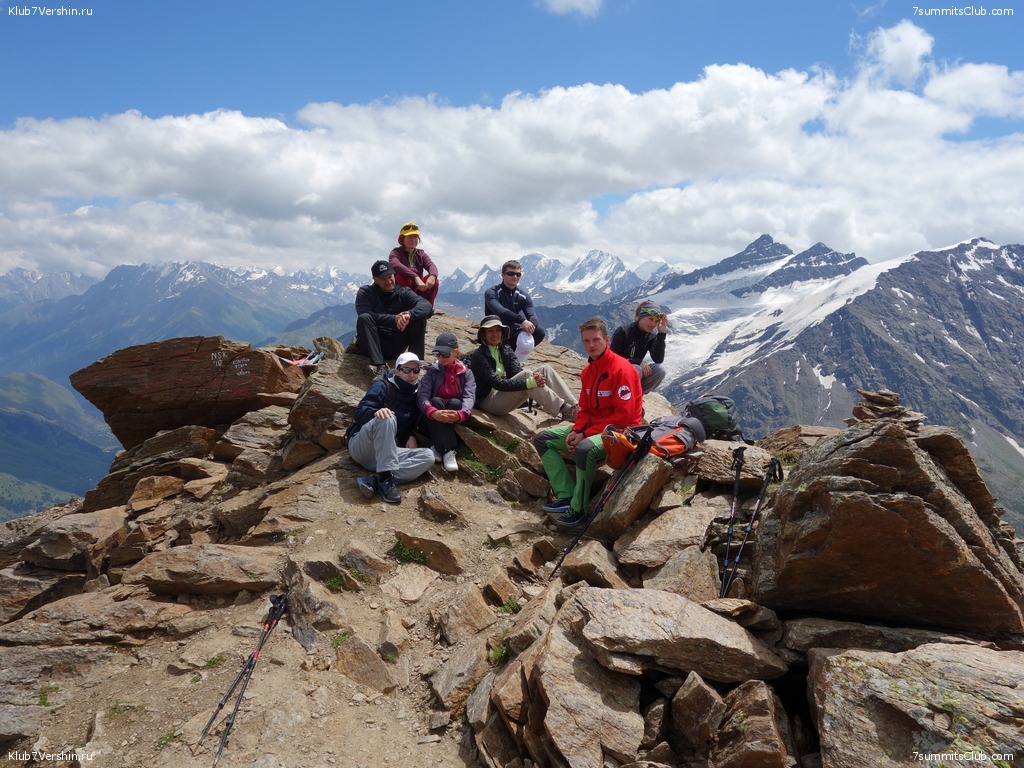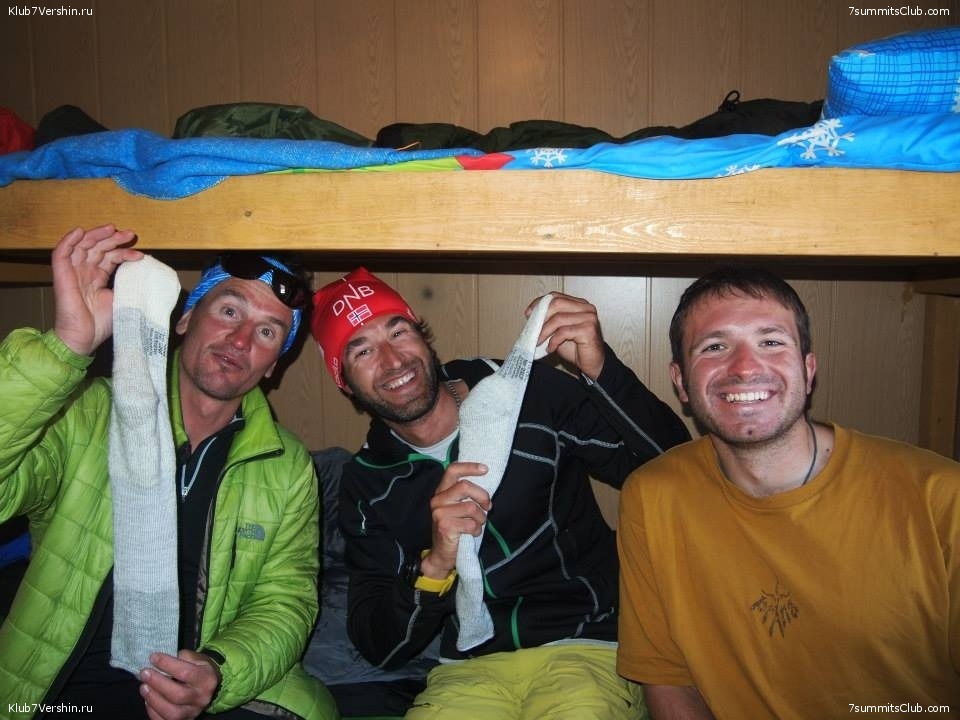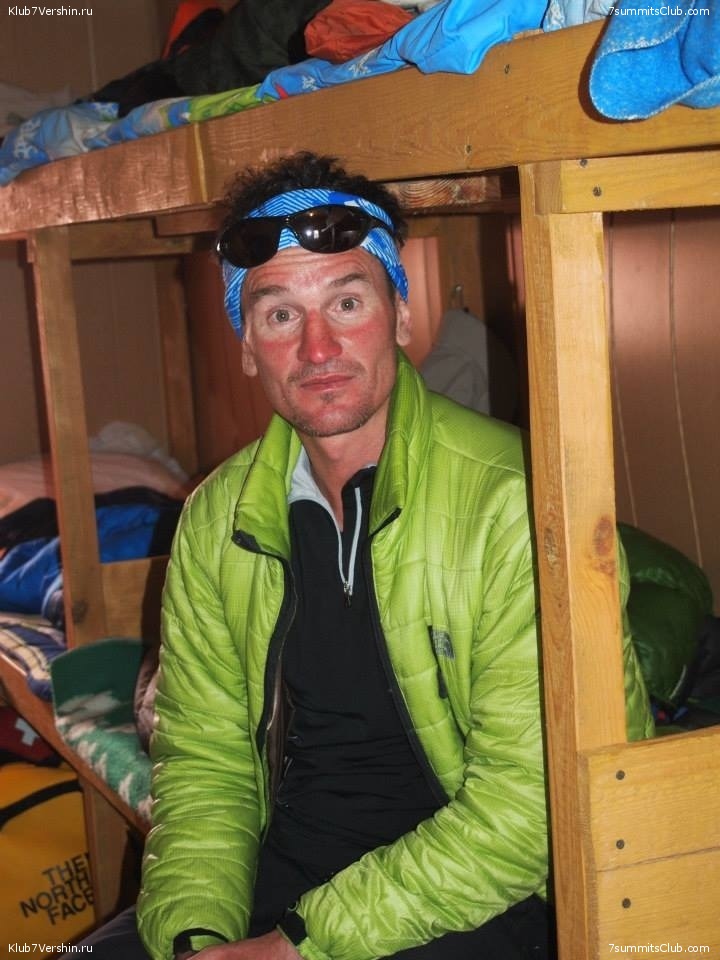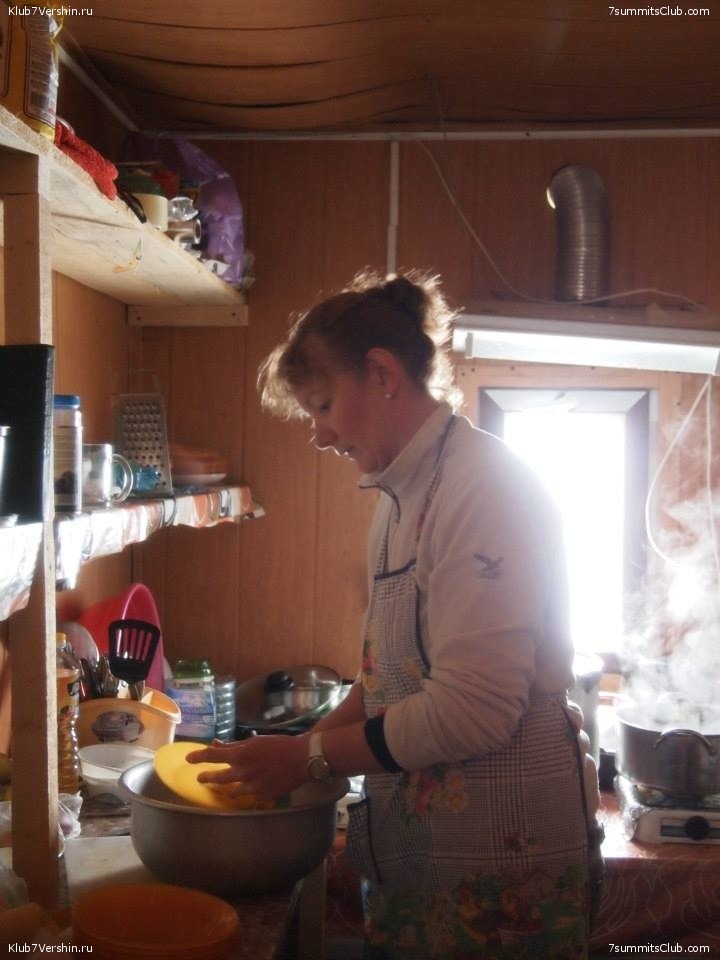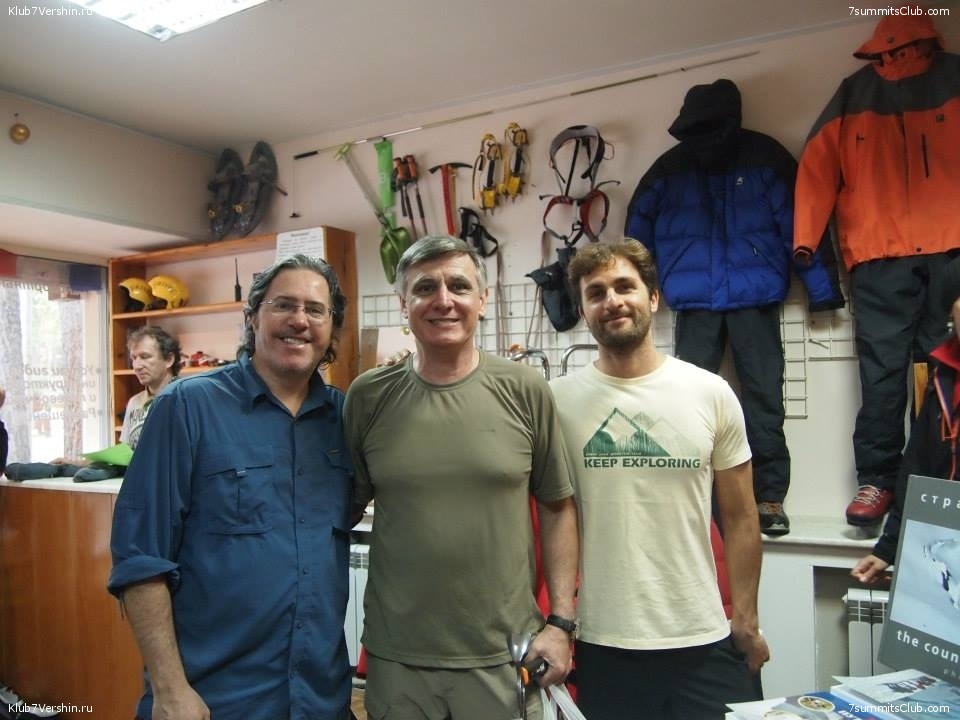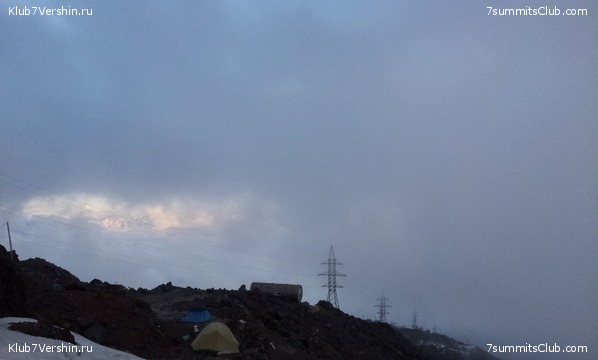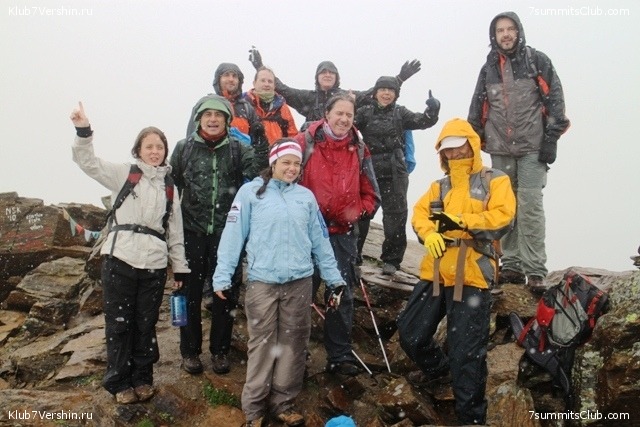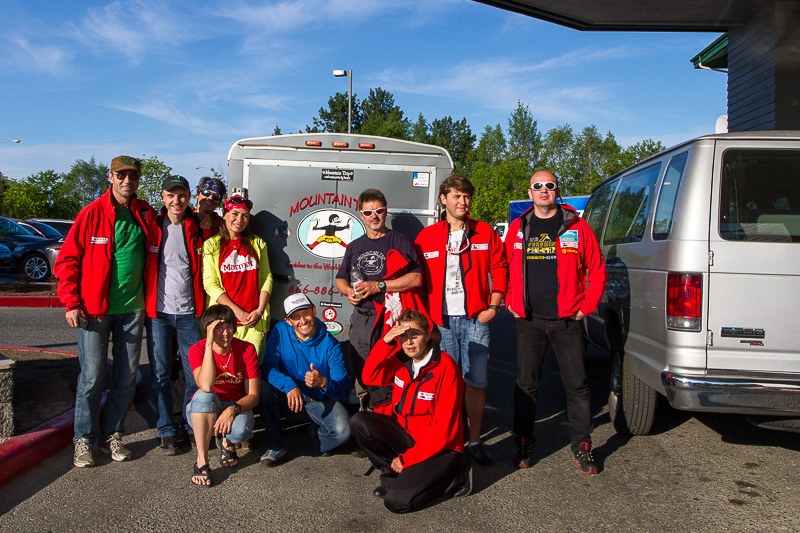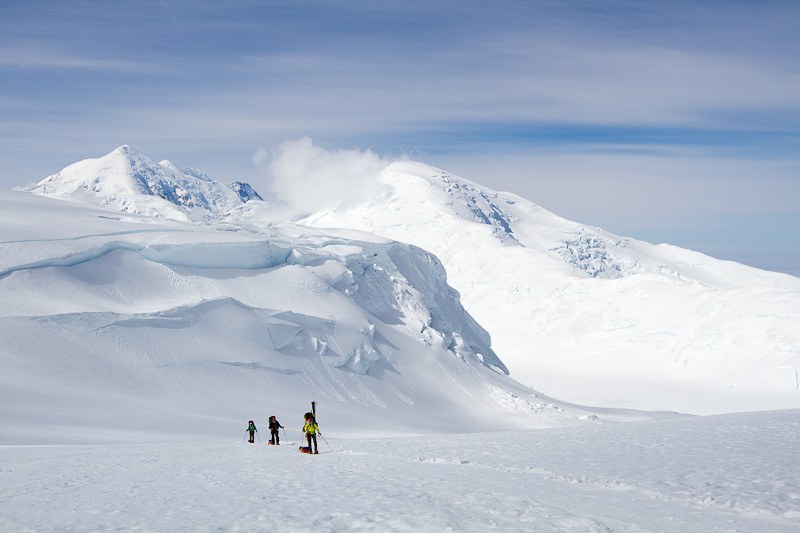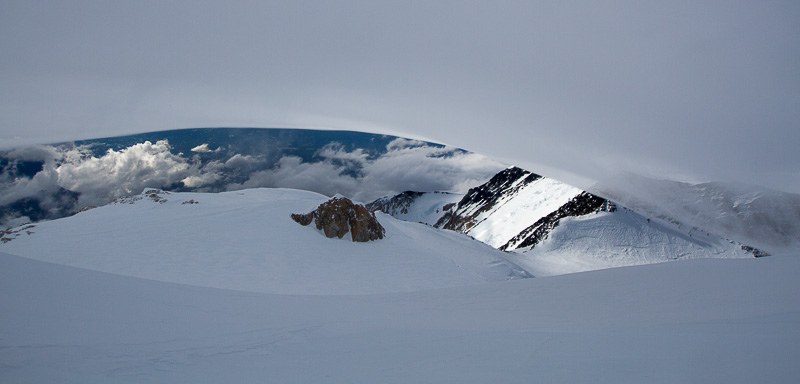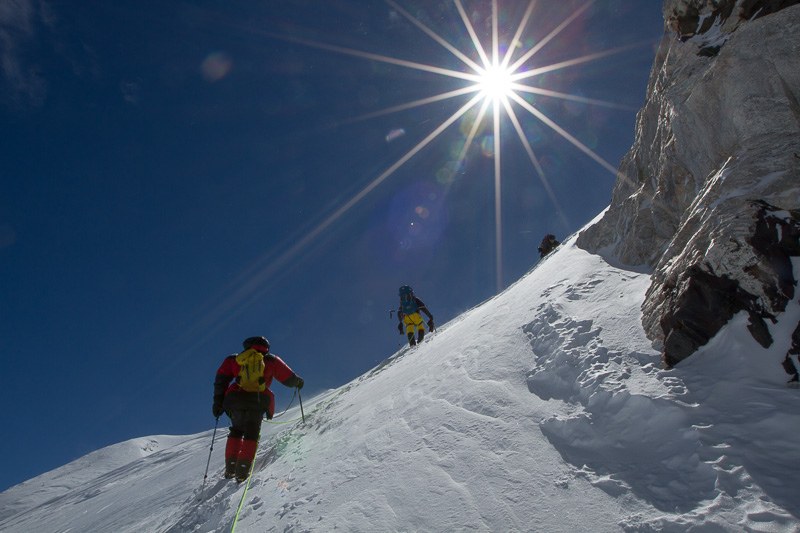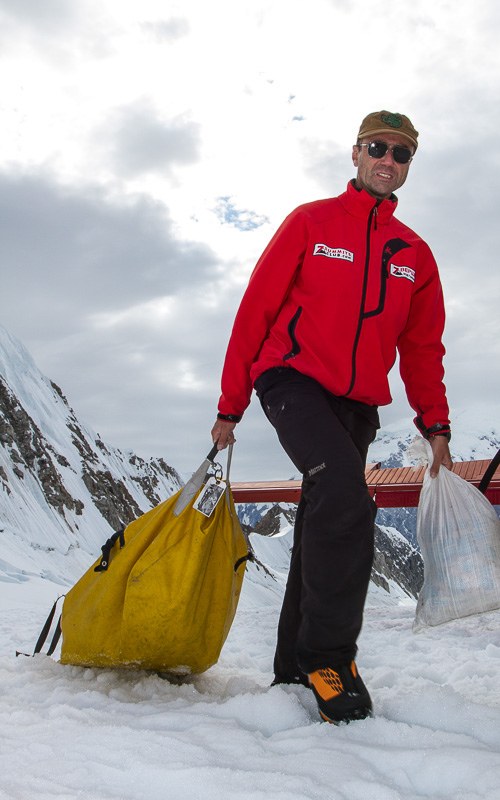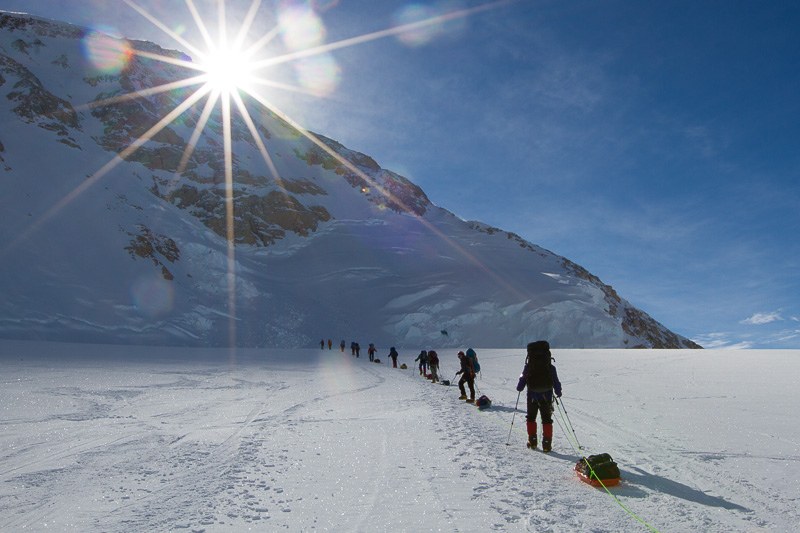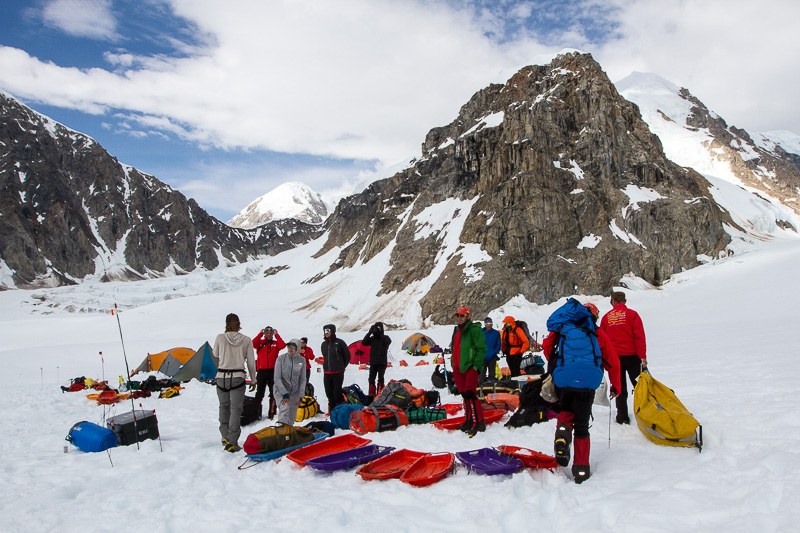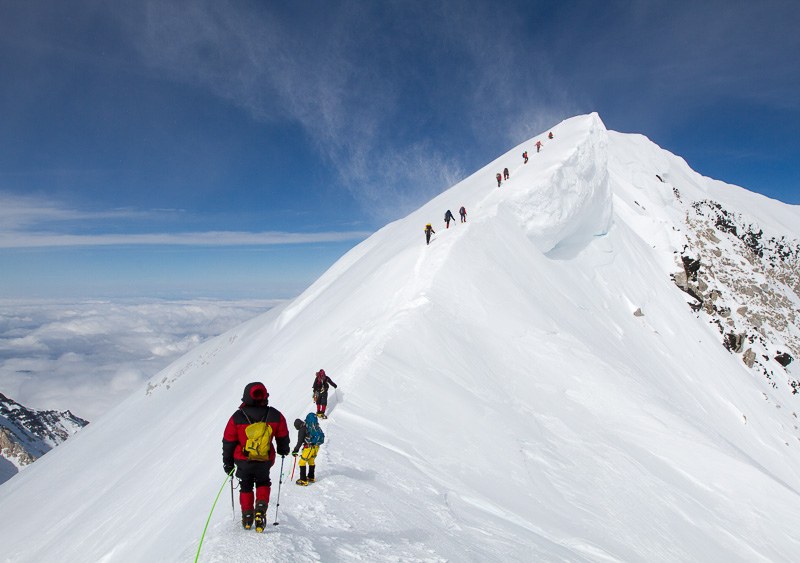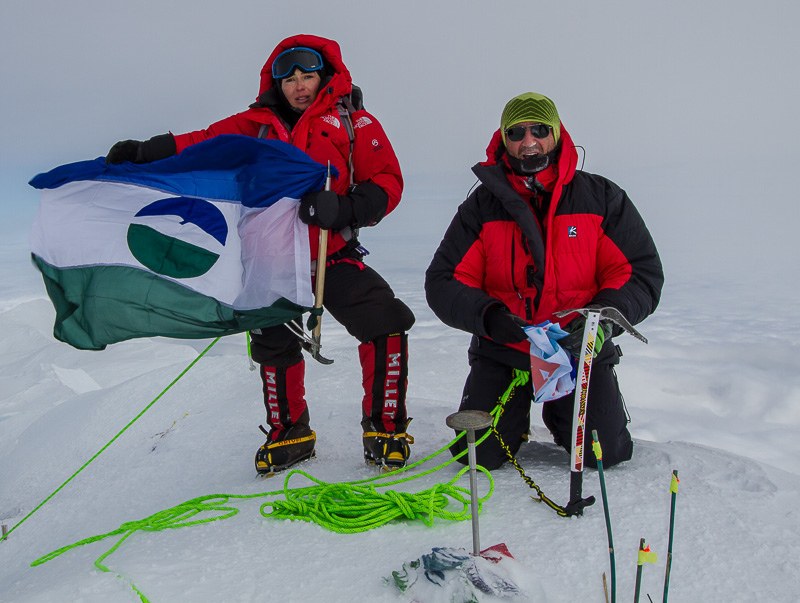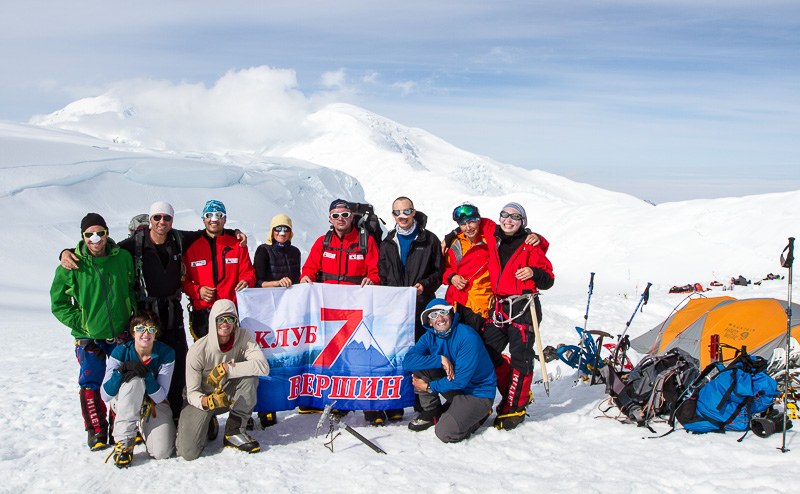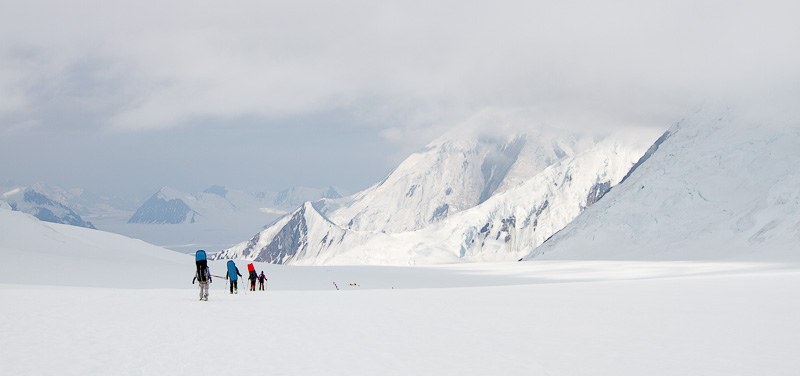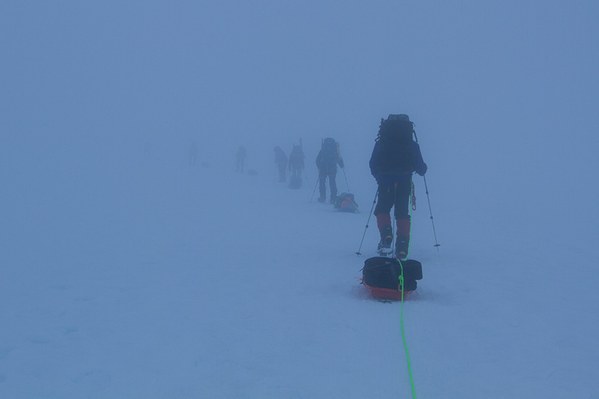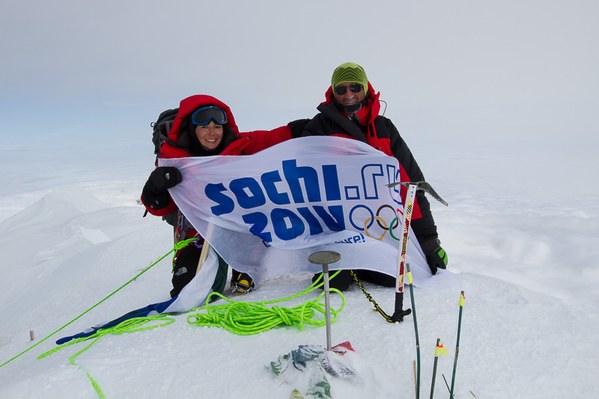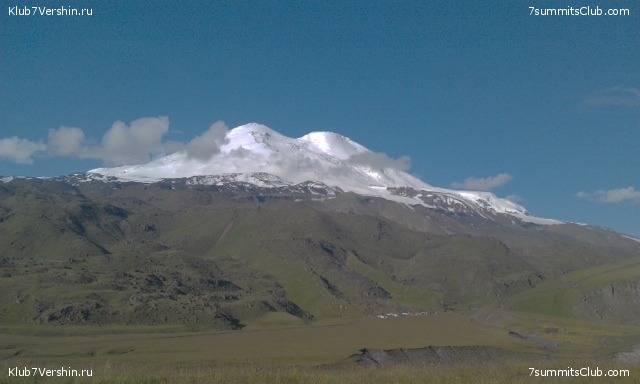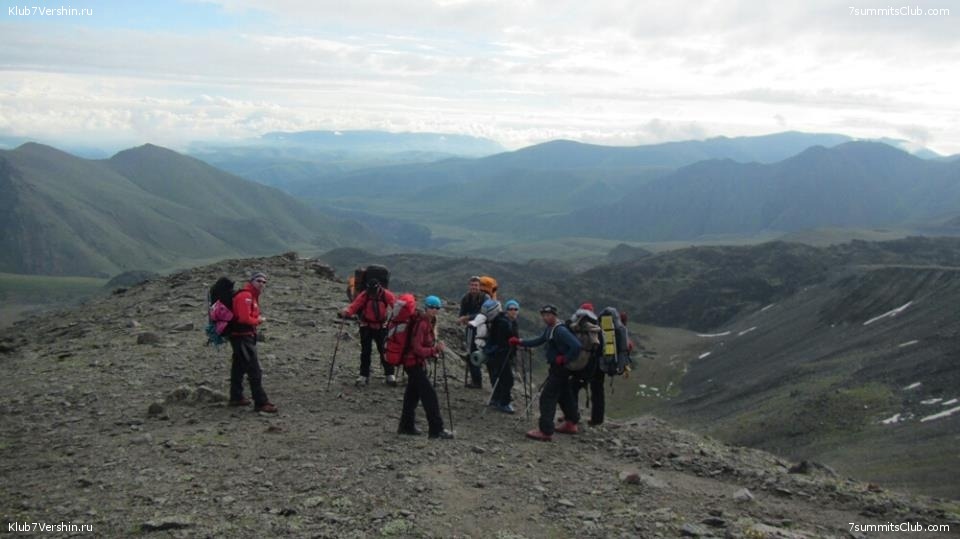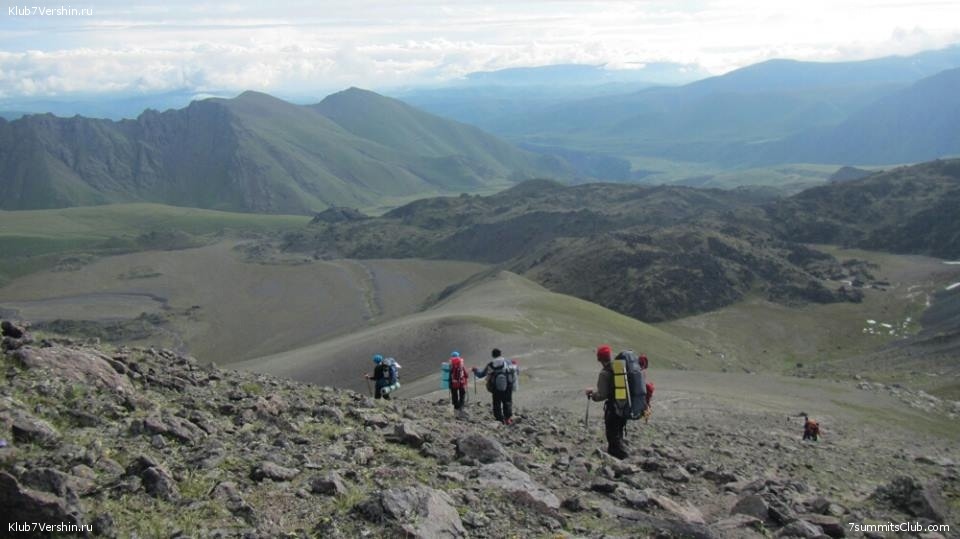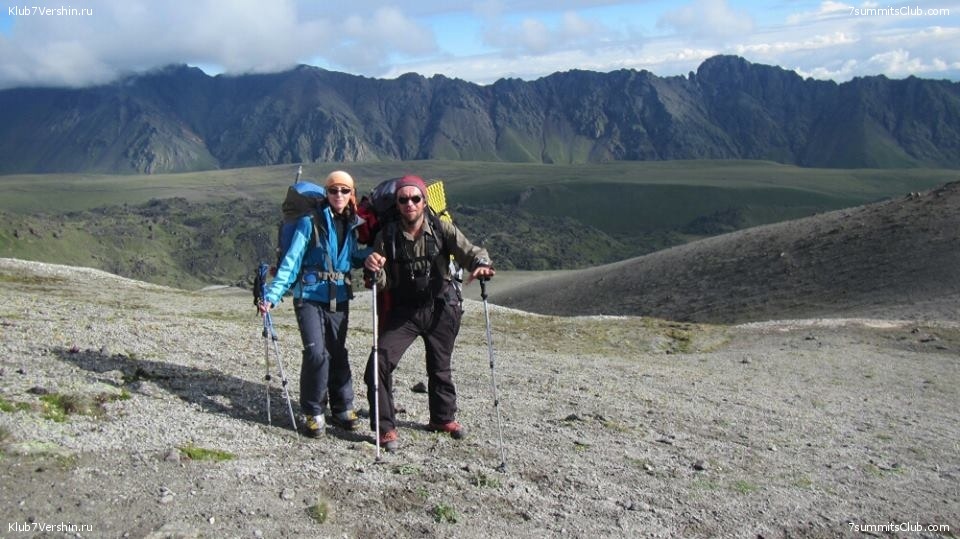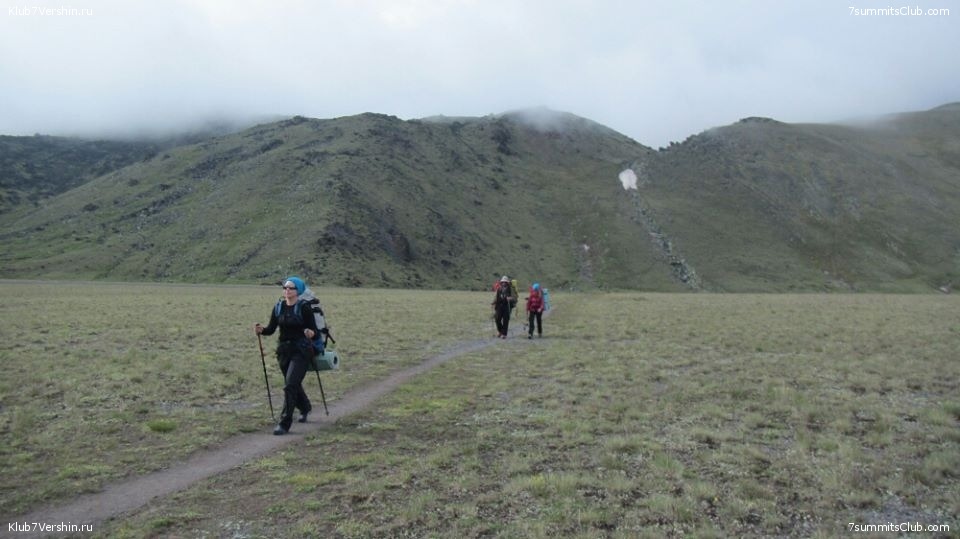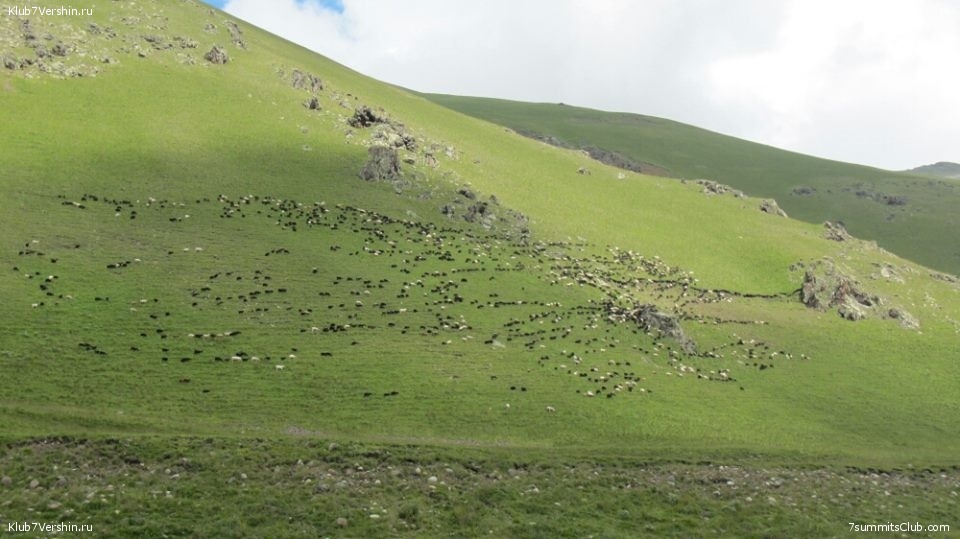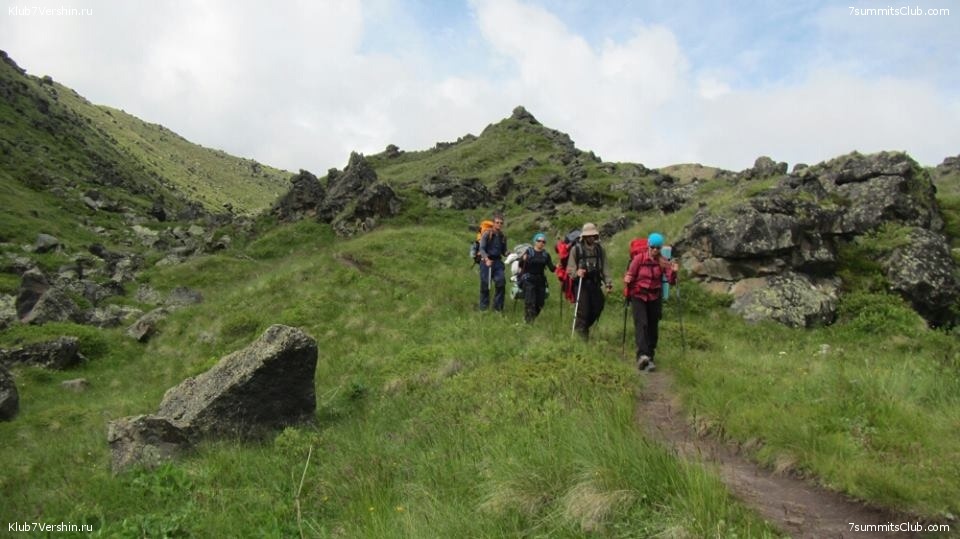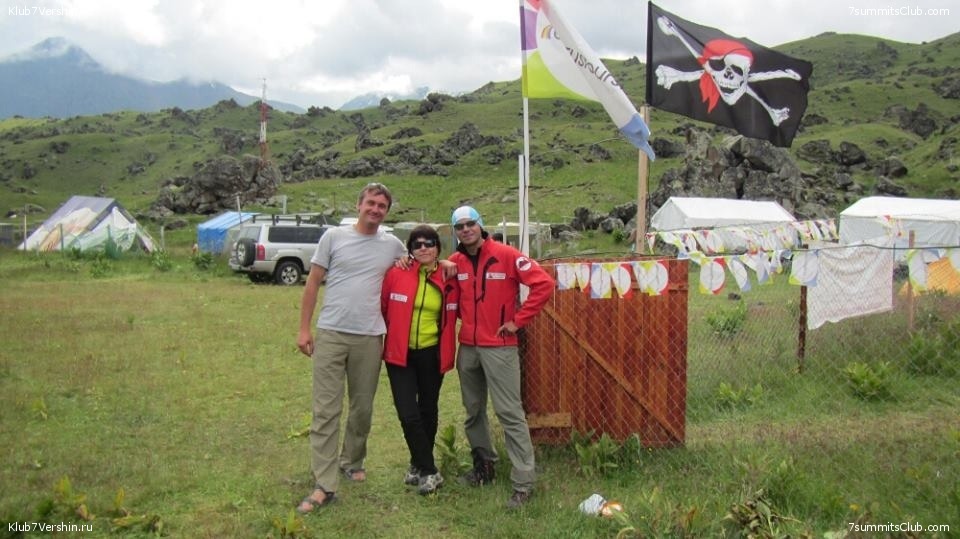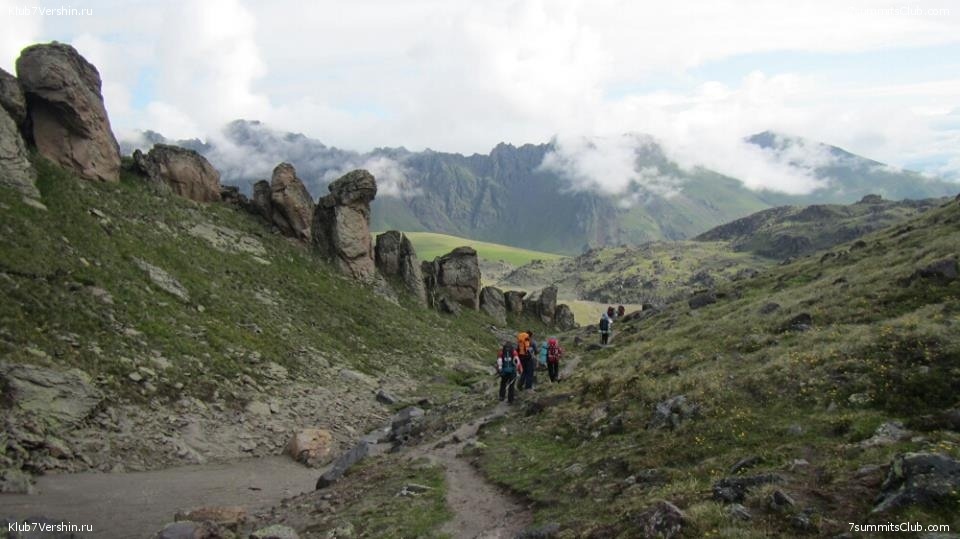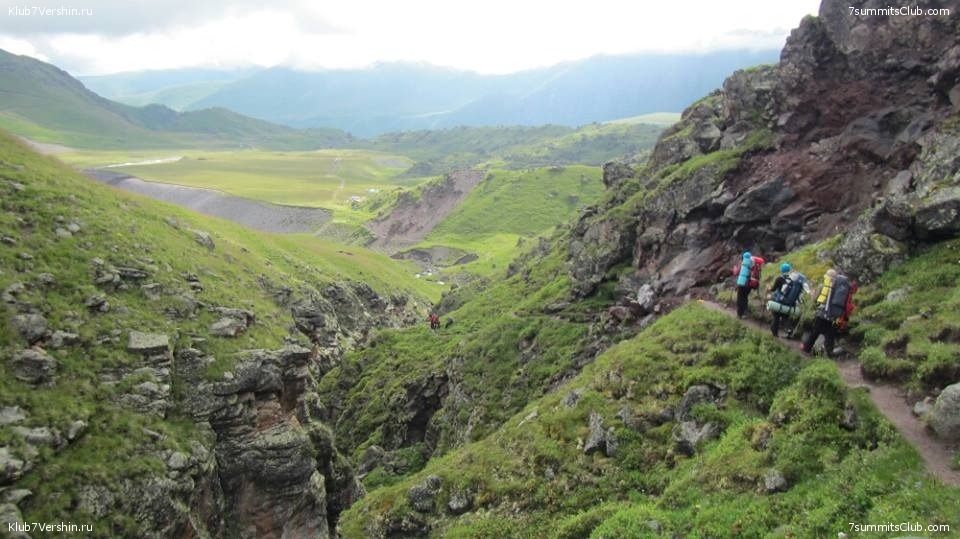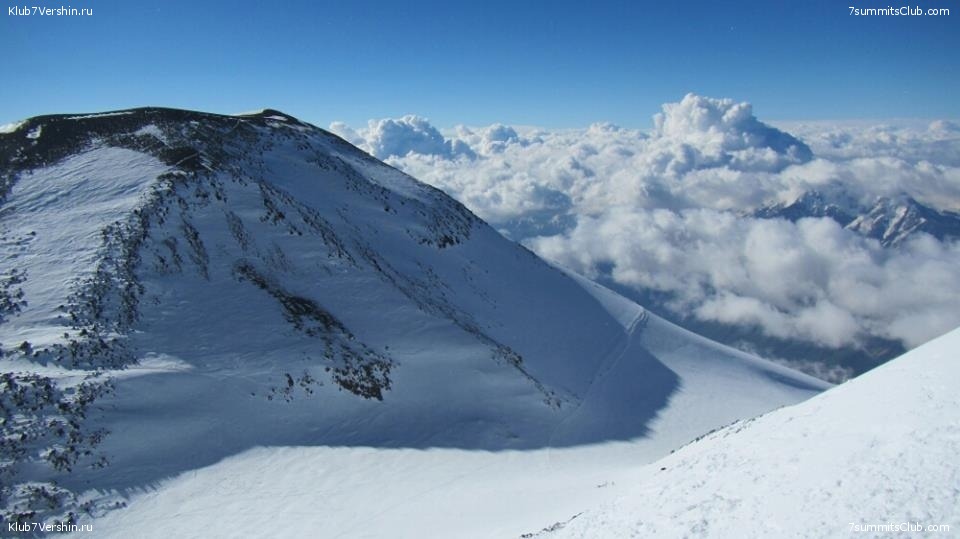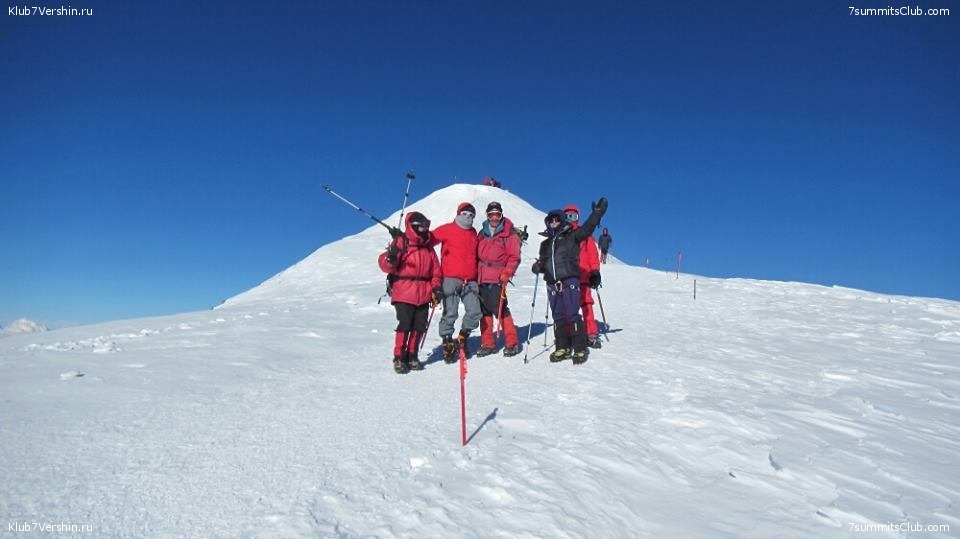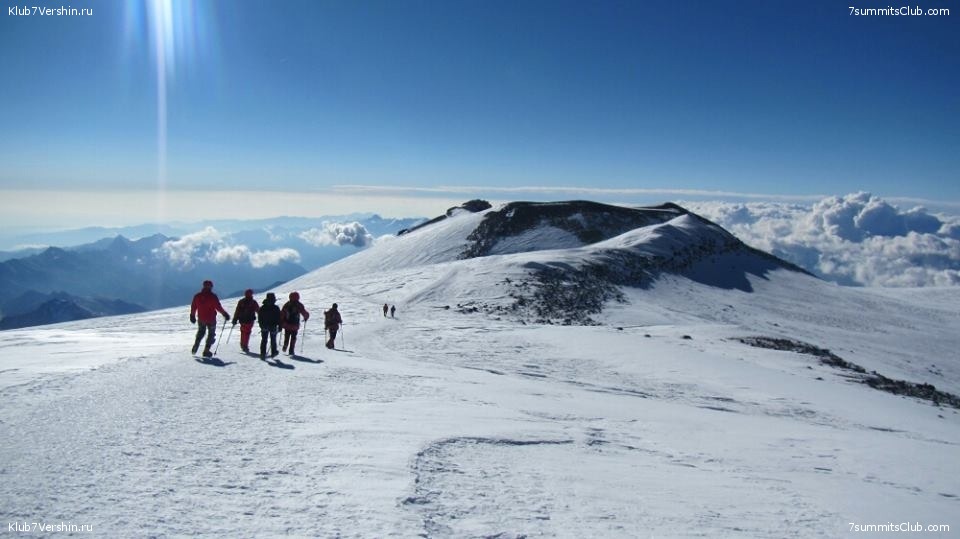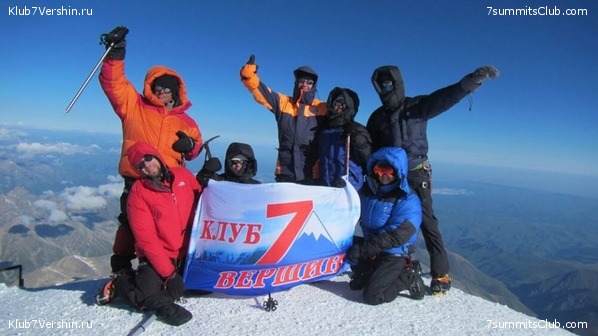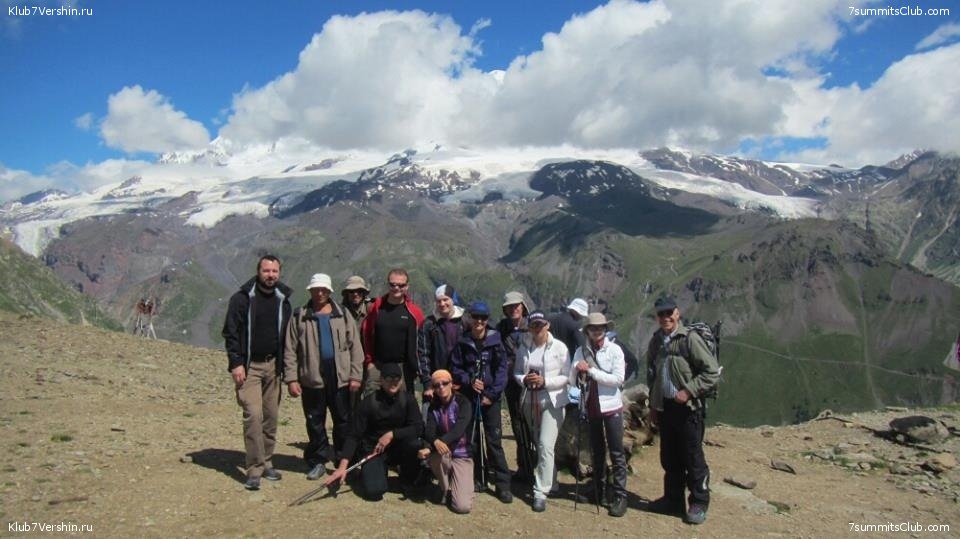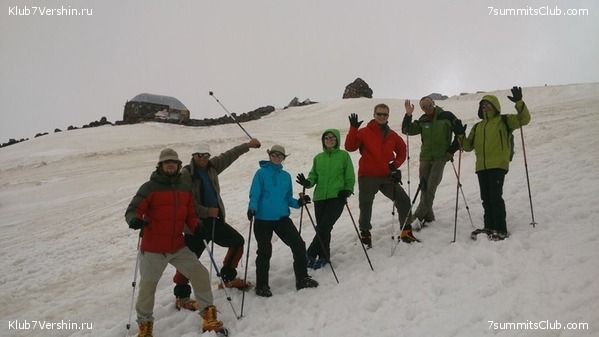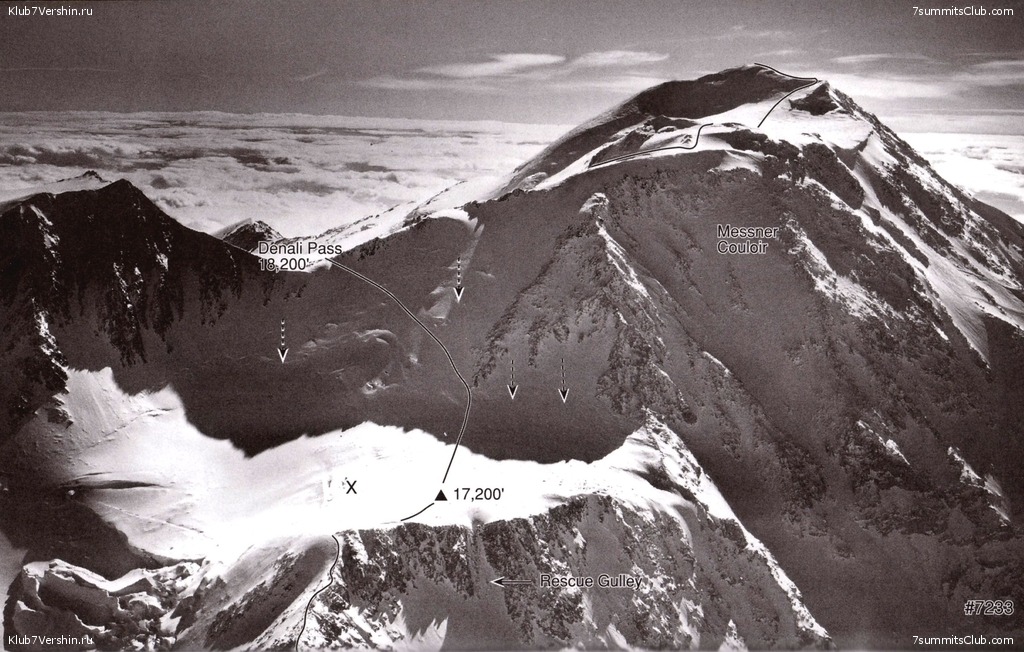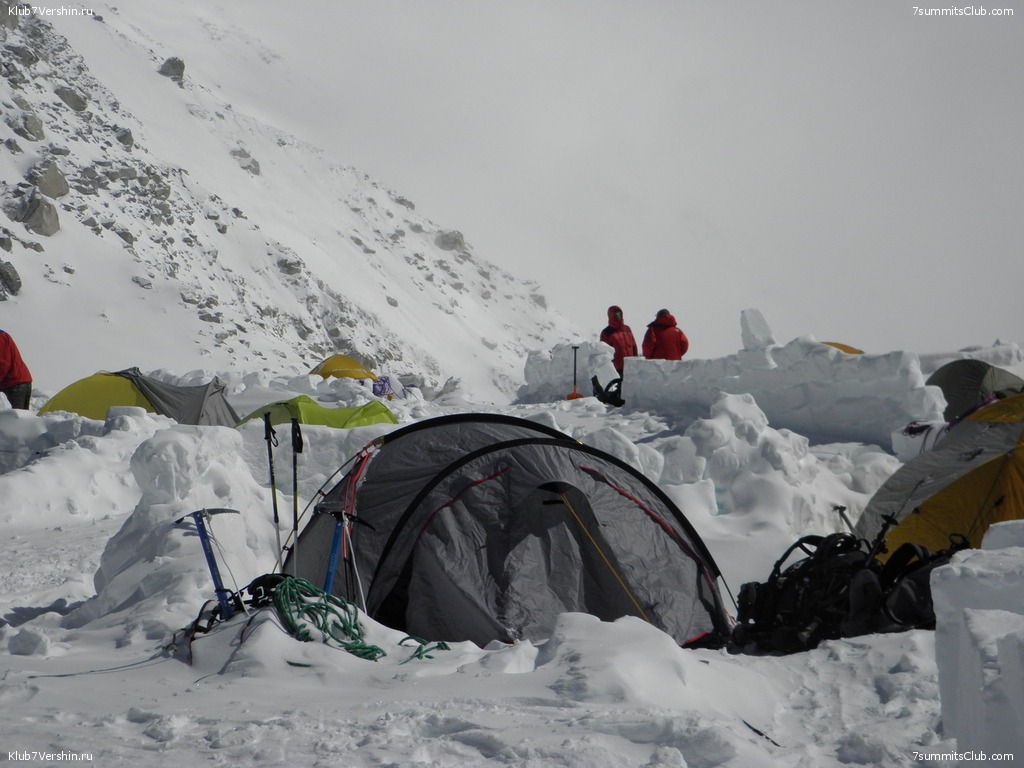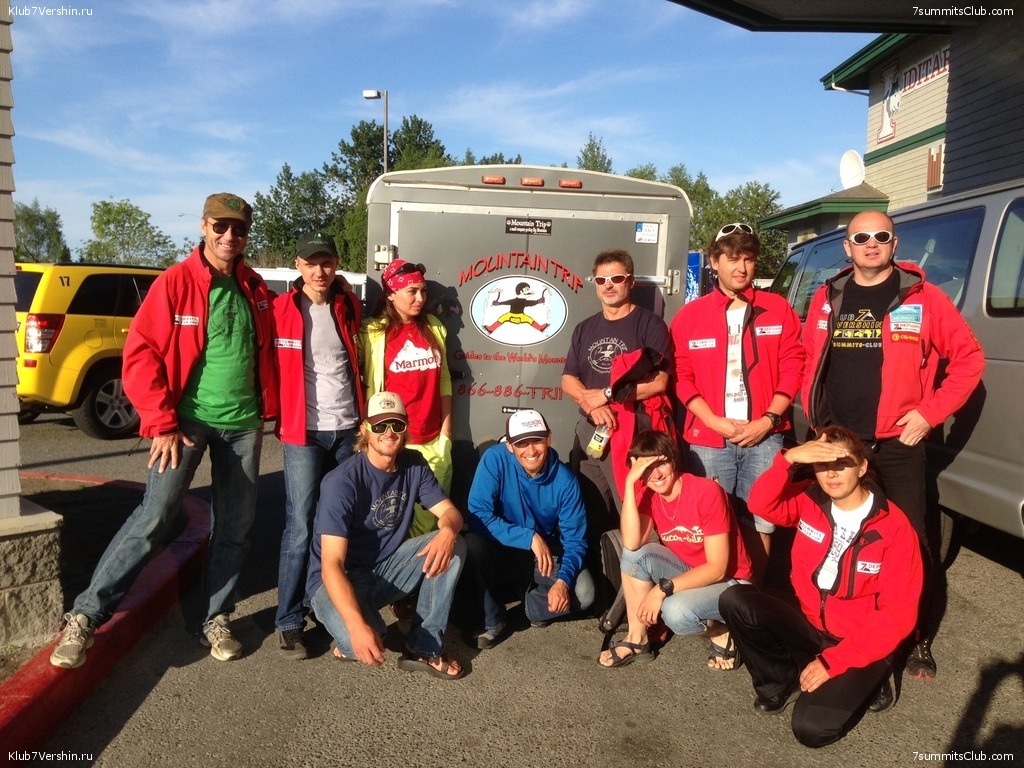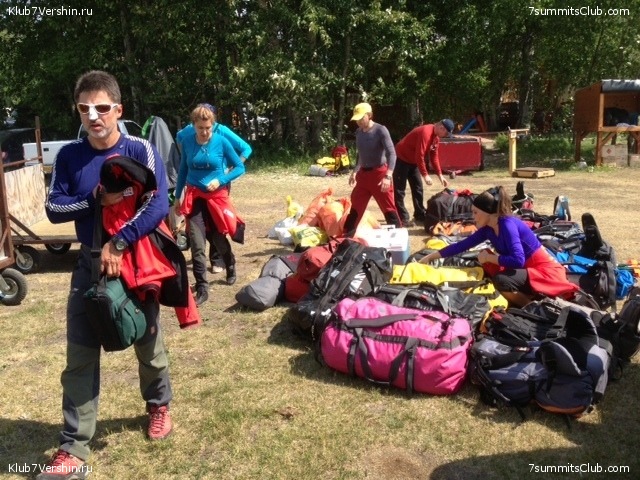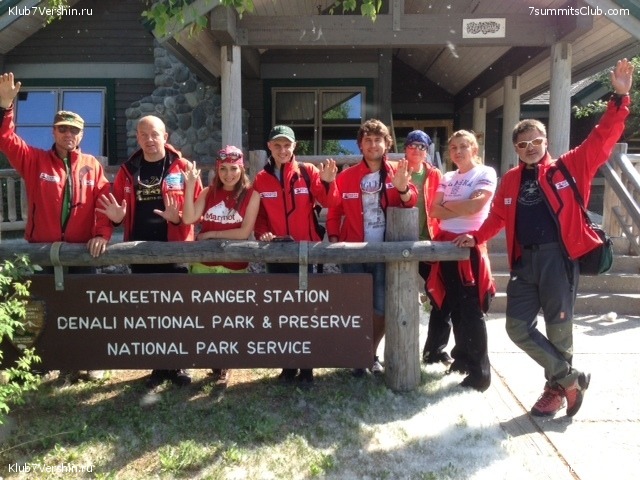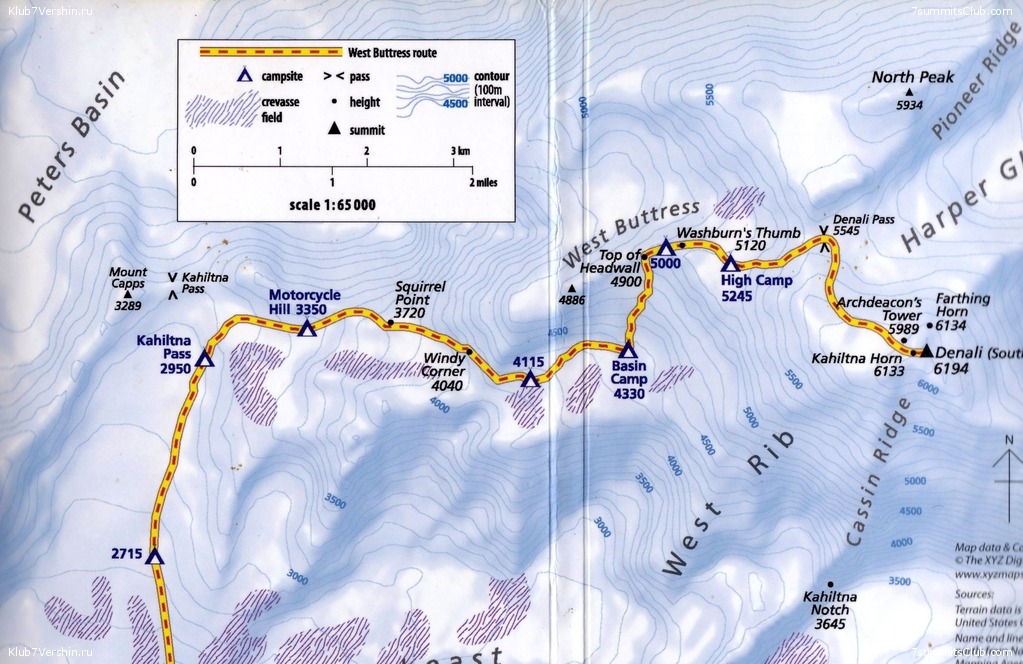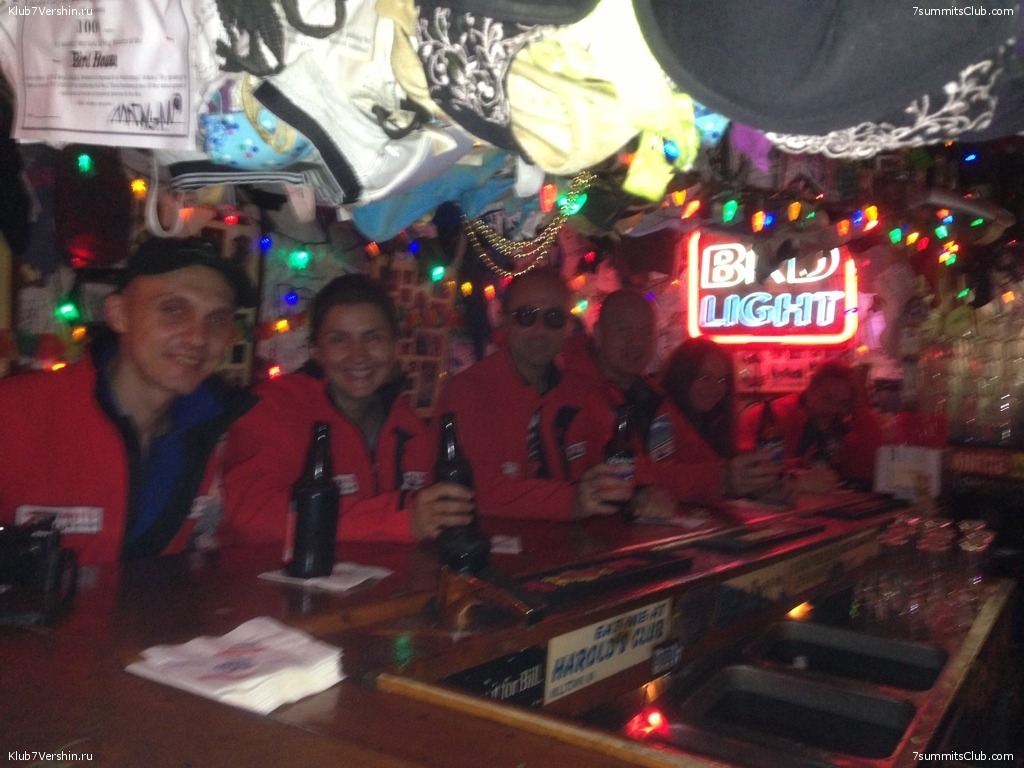"7 Summits + 2 Poles" project news - Page 147
Alex Abramov climbed Mount Elbrus with whole team including his daughter and his son
Elbrus.
Alexander Abramov from Elbrus. Today, August 15, we had a remarkable event: the whole our team, 7 members and 3 guides, reached the summit of Elbrus. The weather was qiuite good. Also, two our friends Jenia and Katja, with ...
Alexander Abramov from Elbrus. Today, August 15, we had a remarkable event: the whole our team, 7 members and 3 guides, reached the summit of Elbrus. The weather was qiuite good. Also, two our friends Jenia and Katja, with a guide Eugene Pismenny, climbed two peaks, Western and then Eastern, and continued on their way down to the north side of Mount Elbrus. The rest of the team went down to the south.
Un this team Elena Abramova, and Denis Abramov for the first time reached the summit ofMount Elbrus, and made it with his father, Alex Abramov. Such family climb .... . It was hard, seriously. But, in general, all managed.
Alex with children on the summit
News from Elbrus from Alex: there is a new refuge! PHOTOS
Elbrus.
Yesterday, an Elbrus group of Alex Abramov has climbed a refuge of Islam at 3800 m. Today under bad weather conditions they climbed to the Pastukhov rocks for acclimatization. On the way the team visited buildings of a new refuge on the ...
Yesterday, an Elbrus group of Alex Abramov has climbed a refuge of Islam at 3800 m. Today under bad weather conditions they climbed to the Pastukhov rocks for acclimatization. On the way the team visited buildings of a new refuge on the slopes of Elbrus. It was contracted but not in use yet. Just one group had an overnight there. Now it names LeapRus Shelter made and erected by Italian manufacturer “Leapfactory”. The owner is the North Caucasian Mountain Club which is a part of North Caucasus Development Corporation.
More information:
http://caucasus.ru/en/placement/item/1?#section_description
Or (better) in Russian
http://kuchavo.ru/archives/3057
Elbrus Summit for the World Mountaineering Day
Elbrus.
Denis Provalov, a guide of the Seven Summits Club sent a message from our Terskol office. 8th of August he led a group of six climbers that reached the Western Peak of Elbrus. Then two of them made a traverse to the Eastern Peak and ...
Denis Provalov, a guide of the Seven Summits Club sent a message from our Terskol office. 8th of August he led a group of six climbers that reached the Western Peak of Elbrus. Then two of them made a traverse to the Eastern Peak and went down to the North side of the mountain. The weather was perfect as well as conditions of the group members. The climb was dedicated the World Mountaineering Day, pointed as a memory of the first successful climb of Mont Blanc at 1786.
A great day of departure for the 7 Summits Club
Today, 9th of August is a great day for our Club. Three new big groups departed from Moscow to different directions. 1. Mount Kazbek expedition. It will be an international team, they meet in the Georgian capital Tbilisi. Tour leader ...
Today, 9th of August is a great day for our Club. Three new big groups departed from Moscow to different directions.
1. Mount Kazbek expedition. It will be an international team, they meet in the Georgian capital Tbilisi. Tour leader – Dmitry Ermakov.
2. The fourth in this season group of the 7 Summits Club will start its Mont Blanc program. This program includes an acclimatization on Monte Rosa. Tour leader - Denis Saveliev.
3. For the first time we organize a big tour on the Kurilskyie Islands in the Far East. A program was made by our managers Marina Nemirova and Olga Rumyantseva. The members of this expedition will visit the islands of Shikotan and Kunashir. And climbs volcanoes Mendeleeva, Golovins and Tytya. Unique program !
And the President of the 7 Summits Club Alex Abramov flew to the Caucasus. He will a leader of a new our group that will climb Mount Elbrus.
A new group starts Elbrus climb
Elbrus.
A guide of the 7 Summits Club Denis Provalov met a new group in Terskol. Today they made an acclimatization outing tî the Mount of Cheget. The weather was severe for climbers. But they could to see their aim - Mount Elbrus. ...
A guide of the 7 Summits Club Denis Provalov met a new group in Terskol. Today they made an acclimatization outing tî the Mount of Cheget. The weather was severe for climbers. But they could to see their aim - Mount Elbrus.
Double on Elbrus
Elbrus.
A fresh information from Elbrus. 2th of August two groups of the 7 Summits Club have climbed the Mount of Elbrus. It was the first day of good weather after a long time of cyclone and a lot of people went together this night. One of ...
A fresh information from Elbrus. 2th of August two groups of the 7 Summits Club have climbed the Mount of Elbrus. It was the first day of good weather after a long time of cyclone and a lot of people went together this night. One of them – an American group led by a guide of the 7 Summits Club Alexandra Sak reached the summit in full. Later the western Peak of Elbrus was reached by our second group with a guide Andrey Berezin. Congratulations!
According an information of Anna Abramova, a leading manager of our office in Terskol
The group of Pavel Laktushkin has climbed Mount Elbrus
Elbrus.
25th of July at 10 a.m. eight members of the group reached the Western Peak of Elbrus. Part of them traversed to the North side of Elbrus, part went back along the ascent route. Today they all met in Terskol in the office of the & Summits ...
25th of July at 10 a.m. eight members of the group reached the Western Peak of Elbrus. Part of them traversed to the North side of Elbrus, part went back along the ascent route. Today they all met in Terskol in the office of the & Summits Club. Everything is OK.
Some pictures from Elbrus region
Elbrus.
The 7 Summits Club office is a center of Elbrus region life. It is a meeting point of different people from Elbrus community. You are welcome, too! Now one big group is rsting after Elbrus climb. And another big group is preparing for ...
The 7 Summits Club office is a center of Elbrus region life. It is a meeting point of different people from Elbrus community. You are welcome, too! Now one big group is rsting after Elbrus climb. And another big group is preparing for the climb. They started from the Cheget mountain.
The summit of Elbrus - for Brasilien group!
Elbrus.
Denis Provalov, a guide of 7 Summits Club reports that 7 Brasilien climbers reached the Western Peak of Elbrus
Denis Provalov, a guide of 7 Summits Club reports that 7 Brasilien climbers reached the Western Peak of Elbrus
The first part pictures from Vitaly Simonovich
McKinley.
Vitaly made more than 1100 pictures during the climb of Mt. Mc-Kinley. Now, just after arriving, he sent us the most emotional one from his collection. We will wait a full gallery soon. But look now ... ...
Vitaly made more than 1100 pictures during the climb of Mt. Mc-Kinley. Now, just after arriving, he sent us the most emotional one from his collection. We will wait a full gallery soon. But look now ...
Look at the Northern side of Elbrus
Elbrus.
Here you could find wild slopes and places. Long walk around unusual rocks without any people. A new and fresh look at Mount Elbrus... ...
Here you could find wild slopes and places. Long walk around unusual rocks without any people. A new and fresh look at Mount Elbrus...
New photos from Elbrus
Elbrus.
Some wonderful pictures from the latest Elbrus climb. The group of the 7 Summits Club led by Dima Ernakov...
Some wonderful pictures from the latest Elbrus climb. The group of the 7 Summits Club led by Dima Ernakov...
The big group of 7 Summits Club climbed summits of Elbrus
Elbrus.
Today 10 from 11 members of our team led by Dima Ermakov reached the Western Peak of Elbrus. The highest - 5642 meters. Then a part of the team made a traverse to the Eastern Peak - 5621 meters. And then they went down to the North and ...
Today 10 from 11 members of our team led by Dima Ermakov reached the Western Peak of Elbrus. The highest - 5642 meters. Then a part of the team made a traverse to the Eastern Peak - 5621 meters. And then they went down to the North and reached a refuge at altitude 3800 meters. Other climbers went safely back to Terskol and now having a rest.
The group of 7 Summits Club reached the base camp
McKinley.
It was not an easest descent, but all ends good. Now all members and guides are in the base camp and waiting for a plane to Talkeetna. The eather is quite bad, snow and storms. But now the climb is over...
It was not an easest descent, but all ends good. Now all members and guides are in the base camp and waiting for a plane to Talkeetna. The eather is quite bad, snow and storms. But now the climb is over...
The team of Alex Abramov reached the top of Mount Mac-Kinley
McKinley.
The team started very early in hard frost. But it ws good solution. In very changebile weather our team was only one was lucky. All members, nine Russians and three Americain guides were on the summit ap. 7 p.m., 6th of July. For Alex ...
The team started very early in hard frost. But it ws good solution. In very changebile weather our team was only one was lucky. All members, nine Russians and three Americain guides were on the summit ap. 7 p.m., 6th of July. For Alex personally it means finising the second Seven Summits. The whole project was borned here, in Alaska at 1994.
Nineteen years ago
The group of Alex Abramov has climbed to the high camp
McKinley.
After 4 days of waiting in the Basin (Rangers) Camp the group of Alex Abramov moved to the High Camp. In was a just unexpected windows. The weather is unpredictable. But or climber are ready for the summit assault. ...
After 4 days of waiting in the Basin (Rangers) Camp the group of Alex Abramov moved to the High Camp. In was a just unexpected windows. The weather is unpredictable. But or climber are ready for the summit assault.
Dmitry Ermakov with a group climed Mount Elbrus
Despite hard conditions, a group of Dima Ermakov has climbed the Mount of Elbrus. Now they are already in Terskol, in the restaurent, everybody is happy.
Despite hard conditions, a group of Dima Ermakov has climbed the Mount of Elbrus. Now they are already in Terskol, in the restaurent, everybody is happy.
Dima Ermakov from Elbrus
Elbrus.
Hello! It is Dmitry Ermakov from the Elbrus region. Yesterday we made a record. We climbed the mountain in 4 hours from camp to camp. Of course, we used a little snowcat. But the fact, however, even for me it is a discovery. I myself never ...
Hello! It is Dmitry Ermakov from the Elbrus region. Yesterday we made a record. We climbed the mountain in 4 hours from camp to camp. Of course, we used a little snowcat. But the fact, however, even for me it is a discovery. I myself never did the top of Mount Elbrus with such speed. A record. In general, all is OK. Yesterday, almost all the participants returned home. We are waiting for the next. Everything is fine. Come all to Elbrus region. We are waiting for you. Hello everyone!
Alex Abramov with a group started to climb Mount Mc-Kinley
McKinley.
Yesterday they landed at Kahiltna Glacier. And in night the group made the first miles to thr summit.
Yesterday they landed at Kahiltna Glacier. And in night the group made the first miles to thr summit.
Alex Abramov met a group in Anchoridge
McKinley.
Alex met a group of the 7 Summits Club. They are 9 persons to climb Mt. Denali. Now they stay in the Millenium Hotel. All is OK.
Alex met a group of the 7 Summits Club. They are 9 persons to climb Mt. Denali. Now they stay in the Millenium Hotel. All is OK.

